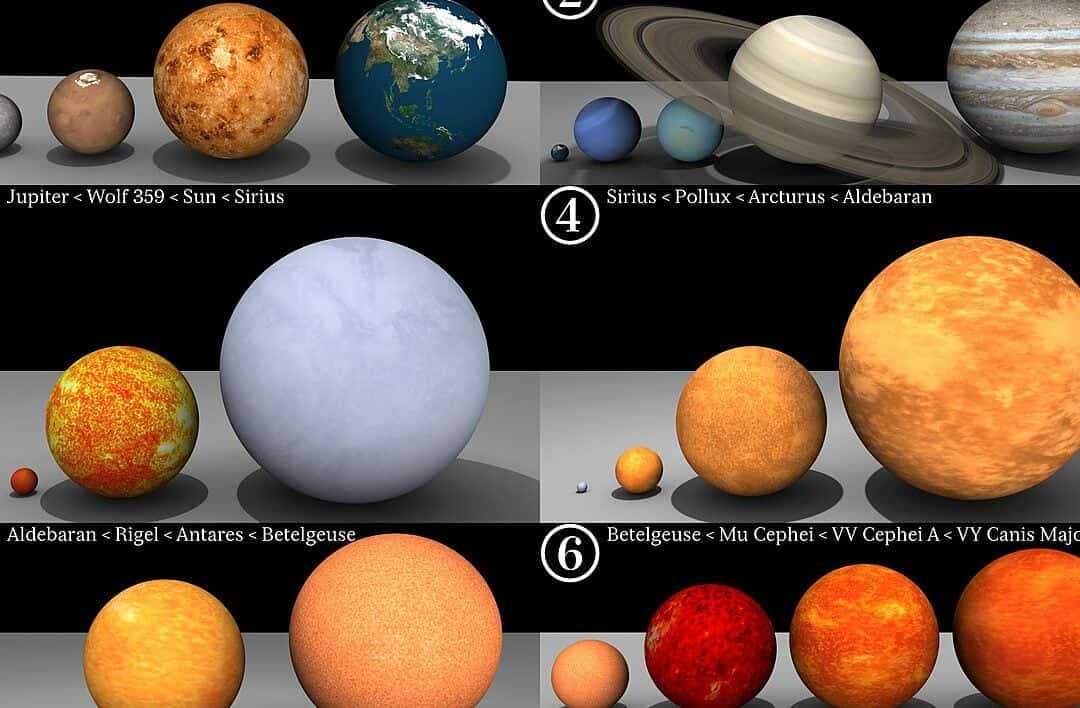Until recently, the UY Shield star held the title for being the largest star ever discovered. When compared to our Sun, our own star appears minuscule in comparison to the immense size of UY Shield. However, there exists a star even larger than UY Shield. In this article, we will explore the largest star known to humankind in the vast expanse of the Universe.
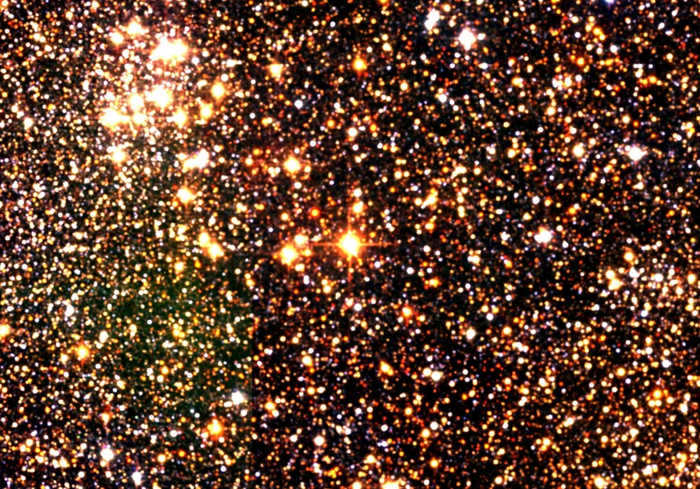
Which stars are the biggest in the Universe?
Red supergiants are among the largest stars in the Universe in terms of volume. These stars are not born as giants, but they eventually become giants as they reach the extreme stage of their evolution. Due to their immense mass, they have relatively short lifespans, typically ranging from 30 million to several hundred million years. Red giants can often be found in dispersed star clusters, spiral galaxy arms, and irregular galaxies.
Supergiants arise when massive stars on the main sequence deplete all the hydrogen in their cores. Subsequently, they commence expansion, similar to lower-mass stars, but distinguishably, future supergiants promptly initiate helium fusion in their cores. As a result, they advance almost horizontally across the Hertzsprung-Russell diagram, transitioning into red supergiants.
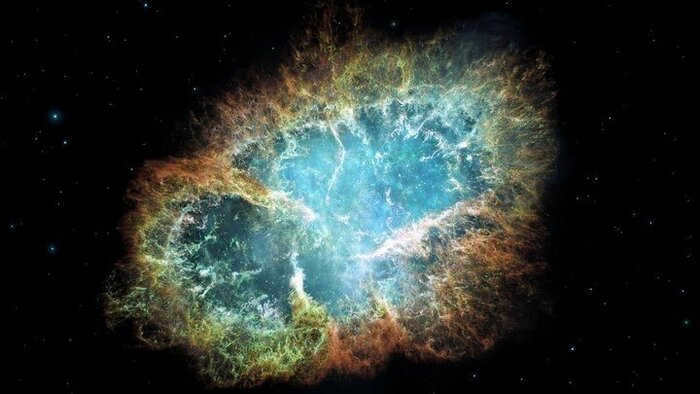
Once a star transitions into a supergiant phase, it sheds a significant portion of its mass. Consequently, red supergiants take the crown for being the most voluminous but not particularly massive stars in the cosmos.
Stephenson 2-18
Stephenson 2-18, currently recognized as the most massive supergiant, is positioned within the Stephenson 2 star cluster in our Milky Way galaxy, approximately 19,000 light-years away from our planet Earth.
Although Stephenson 2-18 holds the title of the largest known star, it is plausible that there exist supergiants surpassing its size that remain undiscovered. With a radius nearly 2150 times that of the Sun and a diameter reaching almost 3 billion kilometers, Stephenson 2-18 possesses a colossal volume, approximately 10 billion times that of the Sun. Such immense proportions imply that if we were to replace the Sun with Stephenson 2-18 at the center of our solar system, its photosphere would extend beyond the orbit of Saturn.
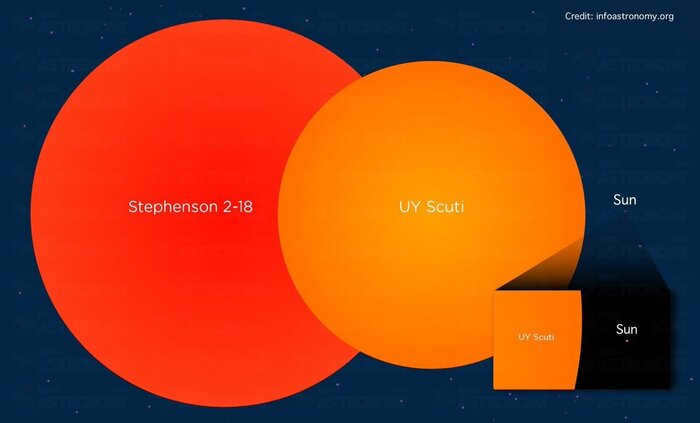
Comparing Stephenson 2-18, UY Shield, and the Sun
Stephenson 2-18 has a luminosity approximately 440,000 times that of the Sun, which is significantly higher than the typical luminosity of an average red supergiant, which is only 30-50,000 times that of the Sun. This is an uncommon characteristic for stars of this type, which is why Stephenson 2-18 is located in the upper right corner of the Hertzsprung-Russell diagram for its M6 spectral type.
Stephenson 2-18 has a relatively low temperature, with a photosphere temperature of around 3200K. The precise mass of Stephenson 2-18 is still unknown, but rough estimates suggest it may be 30-50 times the mass of the Sun. As a result, the average density of the star is incredibly low, comparable to the density of Earth’s atmosphere at an altitude of 90 km.
Therefore, currently the largest star that humanity is aware of is the supergiant Stephenson 2-18. It stands out among all other supergiants due to its enormous size and incredible luminosity.
Make sure to subscribe to both my regular channel and my Telegram channel CosmoVision. On the latter, you will find a plethora of fascinating articles to read and have the opportunity to ask any questions you may have.
Where can one find the place with the lowest object density per unit volume? It would be an ideal location for introverts, so to speak.
I am curious, with our current technological capabilities, would it be possible to construct a device that can venture into and return from a star’s surface if the star’s temperature is below 4000K and its density is not excessively high? (Let’s exclude the distance from us to the star itself for now)

Galaxy Where the Constellation of Orion is Located
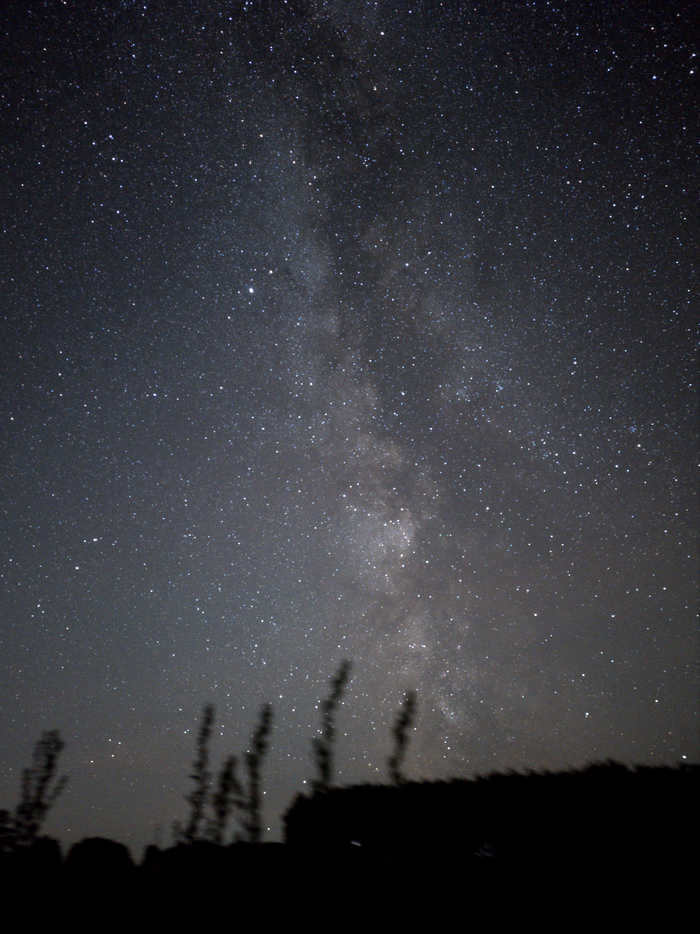
There are 10 pictures taken with a shutter speed of 15 seconds and an ISO of 3200. The photos were captured using a Samsung s20fe smartphone in the green zone of the Southern Urals.

The Perseids meteor shower
I would like to present the outcome of spending 4 hours in the fields of Belarus, where I was constantly interrupted by mosquitos. Unfortunately, the only meteor I managed to capture was with a low-quality Chinese fisheye lens. However, there are other photos that captured satellites passing by.
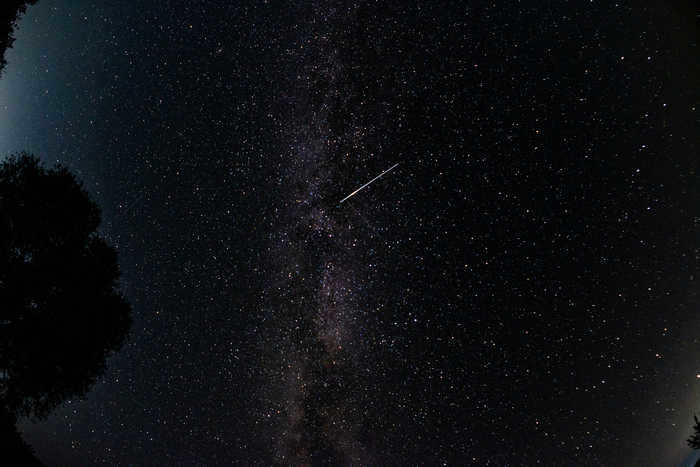
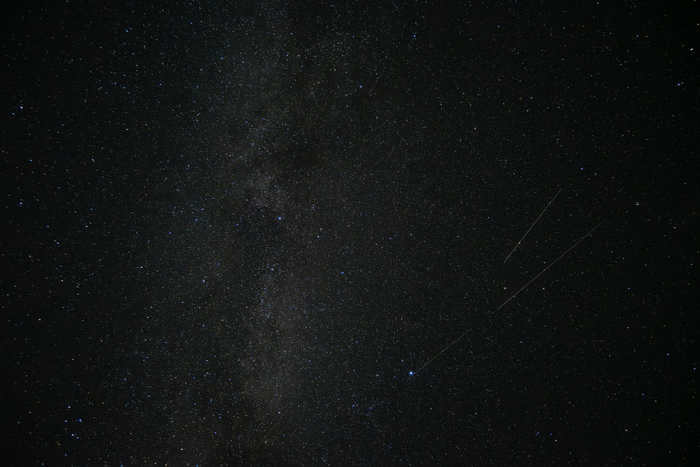

A glimpse into the vastness of our galaxy
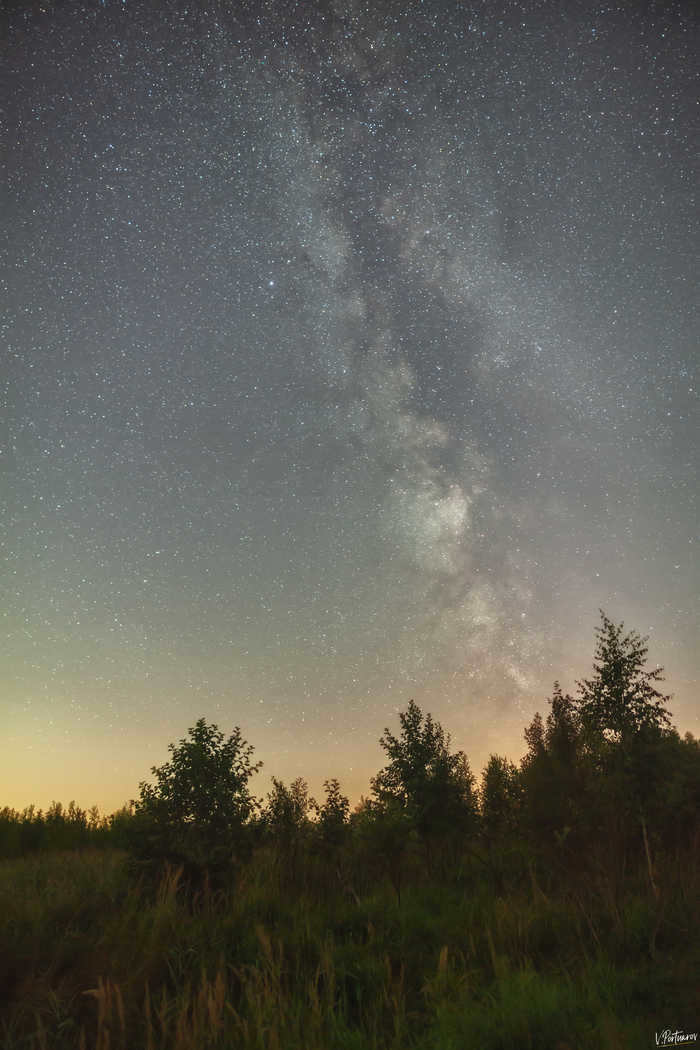

Ilmen Lake illuminated by a dazzling starry sky
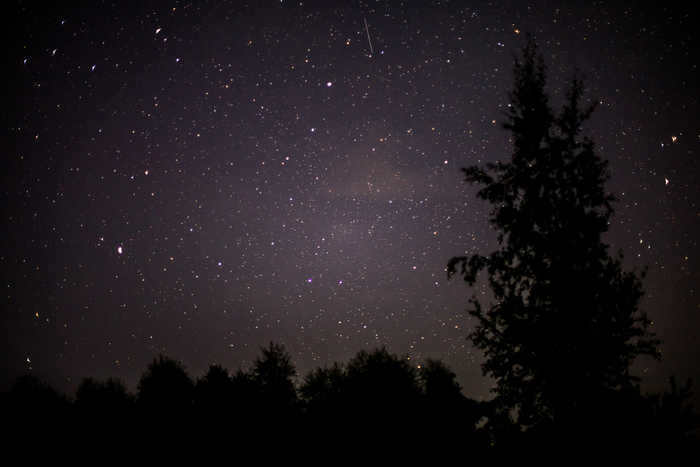
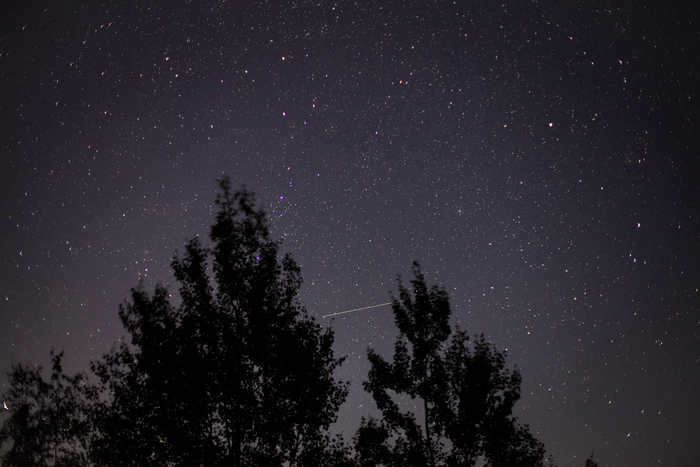
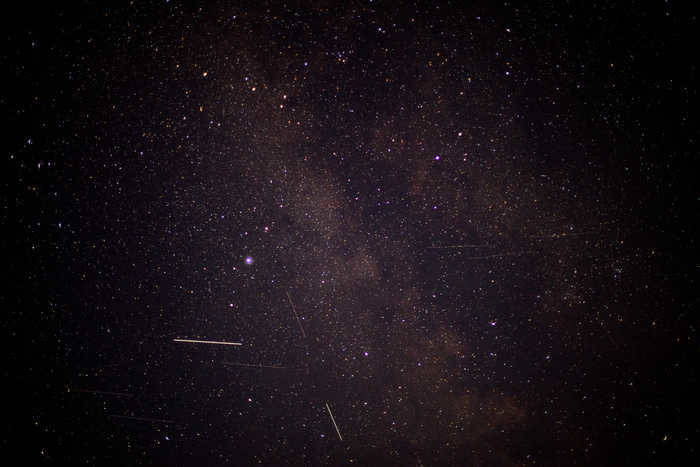
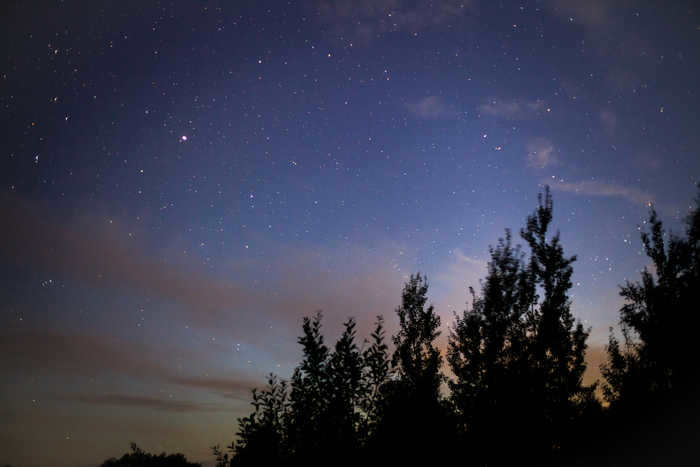
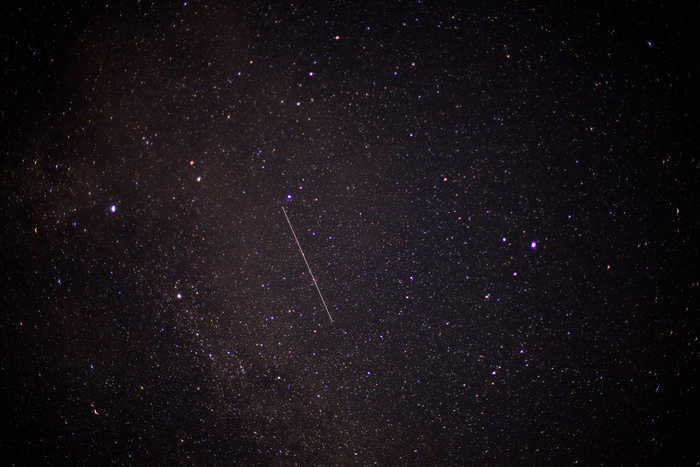

The Quiet of the Night
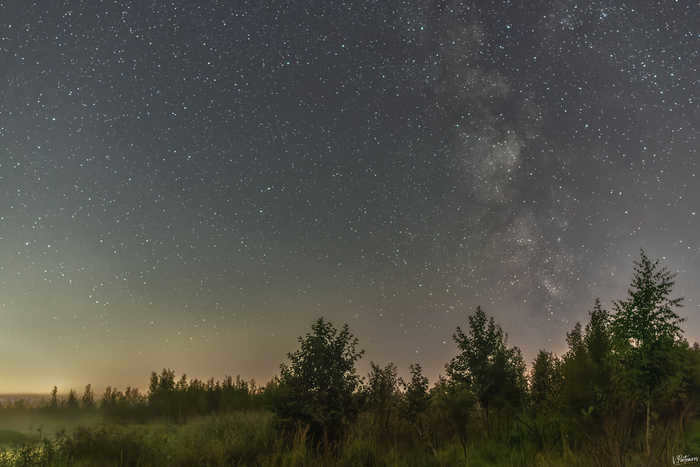
Cassiopeia
The Cassiopeia constellation is located 80 km from Minsk and was captured using a Nikon d80 with a Nikkor 50mm 1.8 lens.
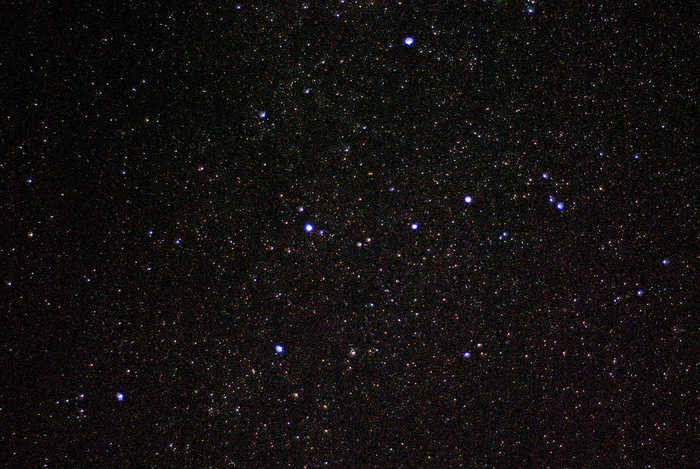

Andromeda Galaxy
I made my initial attempt to capture a photograph of the Andromeda Galaxy using a telescope, but unfortunately, it didn’t go as planned. During a 30-second exposure, an unexpected dark cloud obstructed the view, causing frustration. However, I managed to salvage the situation by switching to a tripod and using a 50mm lens, which resulted in a much clearer image. I would greatly appreciate any advice from experienced astrophotographers on how to properly capture the Andromeda Galaxy through a telescope. It’s worth mentioning that my telescope is a budget-friendly Celestron 70lt az model.
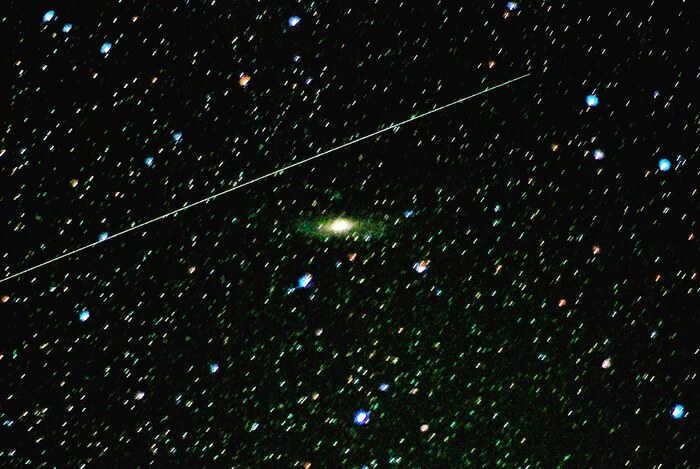
Perseids Meteor Shower.
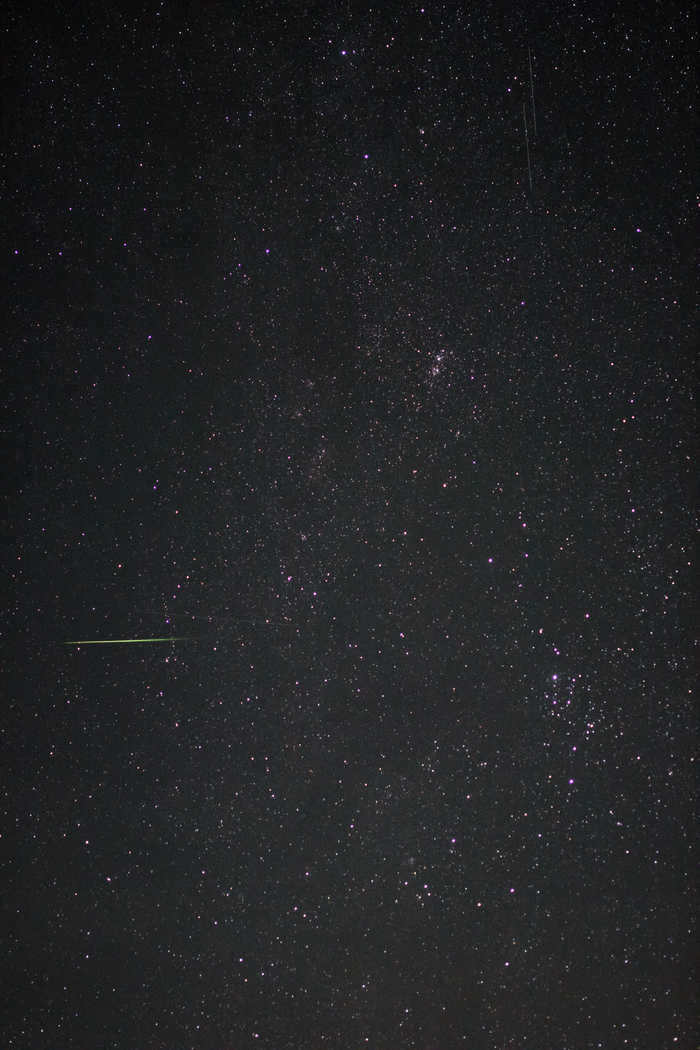
There are numerous celestial bodies out there, but which one is the most fascinating?)
We have witnessed many of them firsthand, and it is truly a magical experience
The most alluring properties in our solar system
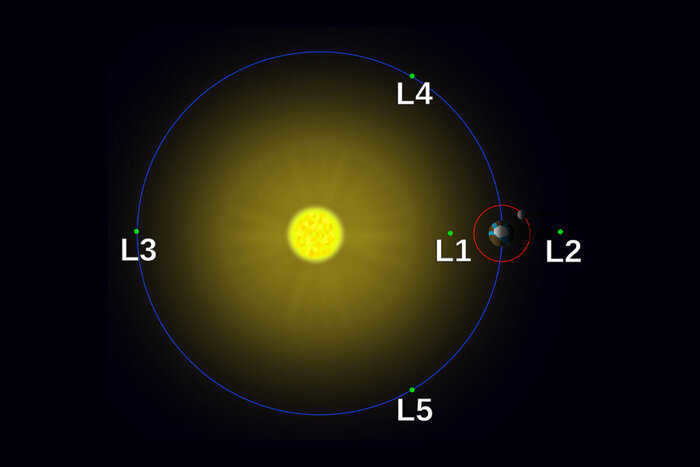
Every celestial object exerts gravitational effects on one another. Nearby objects are particularly sensitive to these effects. In such systems, other forces also come into play, which collectively determine the shape of the orbits of these “motion participants”. At the Lagrangian points, these forces are in balance. Thus, if a relatively small object is placed there, it will remain at a constant distance from the bodies that create islands of stability. These zones are metaphorically referred to as cosmic parking lots: once something is in them, the need to expend energy to remain there practically disappears. Overall, this is an ideal location for any man-made object designed to remain in space for an extended period of time.
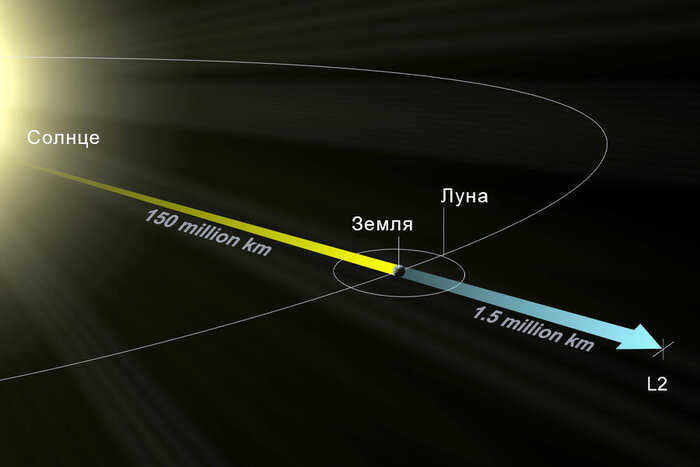
The matter of what precisely can be positioned in a specific Lagrange point is quite fascinating here. Let’s examine those produced by the gravitational interaction between the Sun and the Earth. L1 is situated between the two aforementioned celestial bodies approximately 1.5 million kilometers from our planet. Because the sight of the star is never obstructed, it is a perfect location to observe the Sun.
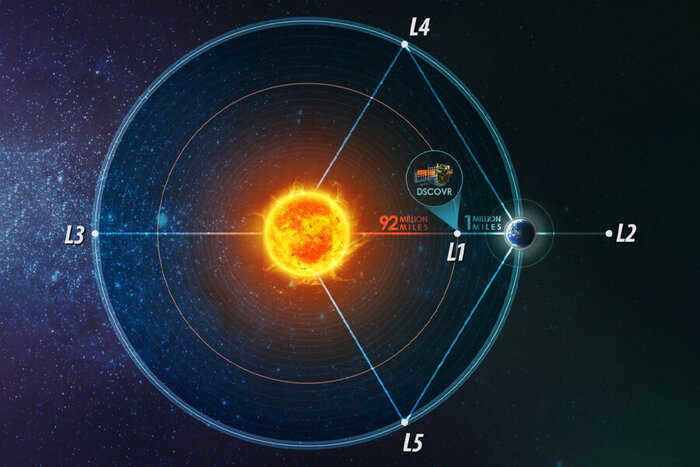
The Deep Space Climate Observatory, an American spacecraft for solar and Earth observation, is positioned at Lagrangian point 1
L2, located on the opposite side of the Earth at the same distance, offers a secure shield from sunlight and unique opportunities for space observation. In 2022, the long-awaited launch of the James Webb telescope finally commenced its operations from this location, fulfilling the expectations of astronomers after a two-decade wait.
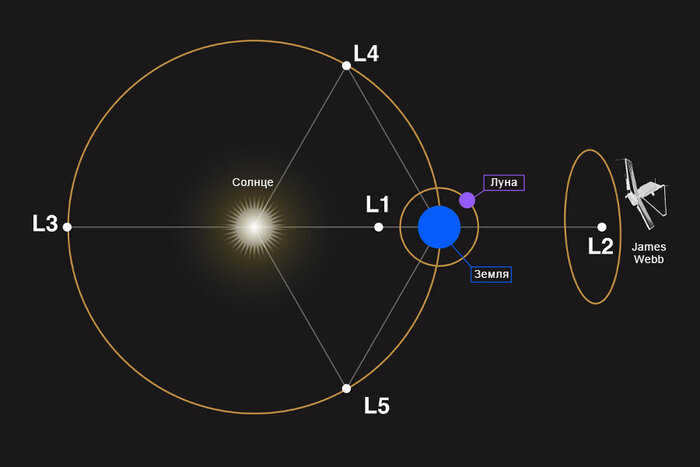
L3, located in the most enigmatic region of the cosmos, lies on the opposite side of Earth’s orbit from the Sun. It is an extraordinary point that remains concealed from the planet’s surface, making it an object of fascination for science fiction authors. However, scientists themselves find little practical use for this secluded location.
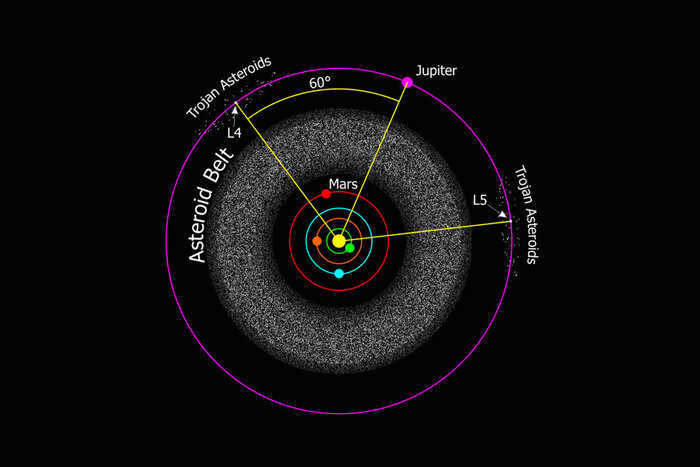
Each Lagrangian point within our solar system possesses its own unique characteristics. Some of these points could potentially serve as gathering sites for essential construction materials, particularly if we perceive drifting asteroids as such resources. Other Lagrangian points have the potential to function as refueling stations, where spacecraft voyaging into the depths of space could replenish their fuel supplies. Additionally, it is conceivable that human settlements could be established and sustained at these points. Undoubtedly, this is a prospect that lies in the distant future, one that we might not live long enough to witness, given the current state of affairs on Earth. Nevertheless, it is always beneficial to indulge in dreams, isn’t it?
Thank you for your kind attention! If you found this article enjoyable, feel free to show your support by giving it a “thumbs up” or subscribing to this channel. We would also like to take this opportunity to inform you that we have our own Telegram channel, where we regularly share fascinating posts about space and astronomy.
We deeply value all of our readers. In case you wish to offer financial assistance (using the button provided below), your name or preferred alias will be acknowledged in the upcoming post. This is our humble gesture of expressing gratitude for your generosity and unwavering support!

Stars that are the biggest in the Universe are a thousand times larger than the Sun. These colossal celestial bodies can even be as big as entire planetary systems. A few of these massive stars can actually be observed in the night sky.
UY Shields
UY Shields is a massive red supergiant star situated in the Shields constellation in the southern hemisphere. It is recognized as the largest star ever discovered by humanity in the entire universe.
This celestial body is incredibly enormous, with a diameter of 4 billion kilometers, making it 1700 times larger than our Sun. To put it into perspective, UY Shields has a diameter equivalent to 16 astronomical units, which is the distance from the Earth to the Sun.
Located approximately 9,500 light years away from Earth, the light we see from UY Shields today actually originated from the star 9,500 years ago.
If we were to position this supergiant at the center of our solar system, it would extend all the way to Uranus, which is the second furthest planet from the Sun. To give you an idea of its immense size, UY Shields is 5 billion times larger in volume compared to our Sun.
Despite its massive size, the star appears faint. This is because there is a substantial accumulation of gas obstructing the direct path between the star and Earth. If not for this hindrance, UY of the Shield would be one of the most luminous entities in the nighttime sky.
VY of the Big Dog
VY of the Big Dog is classified as a red hypergiant. It is situated within the Big Dog constellation.
The star is an astounding 1,400 times larger than our Sun. Despite this, it possesses a remarkably low density, resulting in a mere 17-fold increase in mass compared to the Sun. In terms of both mass and size, VY of the Big Dog approaches the Hayashi limit, which signifies the upper size threshold that a star can attain.
The star possesses a high concentration of oxygen, but it is remarkably light, having a density lower than that of air. If VY Big Dog were to be positioned at the core of our planetary system, it would extend beyond the orbits of Jupiter and potentially Saturn. The star is continuously expanding and has already reached a volume 3 billion times larger than that of the Sun.
The distance to this colossal star is equivalent to 3,900 light years. The supergiant is not in a stable state, as the majority of its mass is already being expelled into the surrounding space. Within the next 100,000 years, the star will confront one of two catastrophic scenarios:
- It will undergo a supernova explosion of galactic proportions, emitting sterilizing gamma rays that will traverse vast distances of cosmic space.
- The star will contract into a black hole, attracting and engulfing the matter surrounding it.
During the winter, one can observe the giant in the starry sky, particularly the constellation of the Big Dog. This constellation is best seen to the right of Orion, with the Big Dog situated below and to the left of Sirius.
WOH G64
WOH G64 is the third largest star in the observable Universe and falls under the category of red supergiants. It is located in the Goldfish constellation in the southern hemisphere, making it invisible from the RK. The star’s volume is comparable to other leading stars and is estimated to be approximately 1,500 times the size of the Sun.
What makes this star unique is its massive dust cloud, which takes the form of a torus. This “cosmic bagel” is 30,000 times larger than the distance between the Earth and the Sun. The presence of this cloud prevents the star’s light from penetrating through, resulting in the giant having an unusually low luminosity.
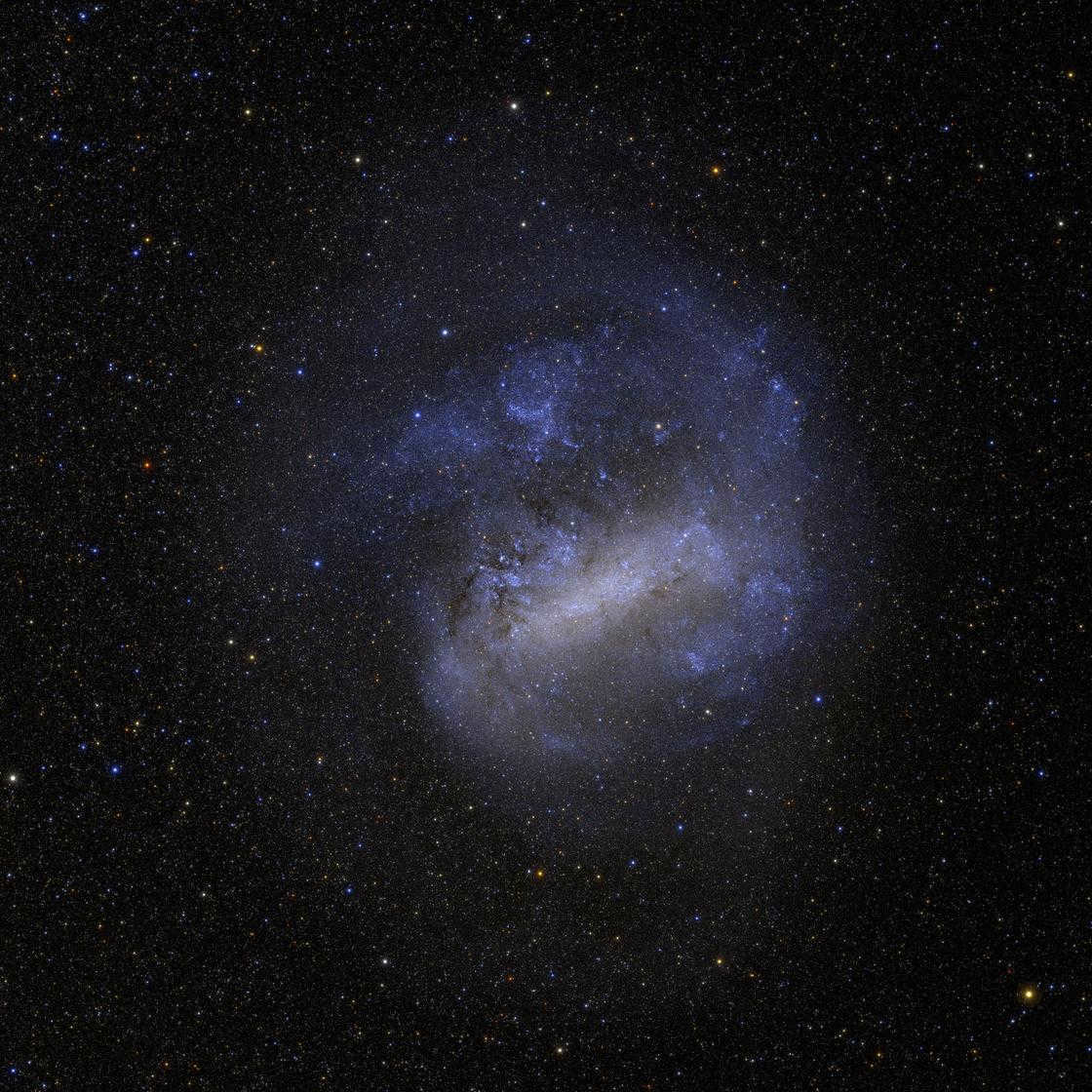
The star used to possess a greater mass in the past. As a result of the phenomenon known as stellar wind formation, where a star’s matter escapes into outer space, it has experienced a reduction of up to one-third of its original mass.
WOH G64 can be found within our neighboring galaxy, the Large Magellanic Cloud, positioned at a distance of approximately 163 thousand light years. The light emitted by this star, which we currently observe, originated during the time when Neanderthals inhabited the Earth.
VV Cepheus A
VV Cepheus A is a binary star system of the eclipsing variety. It is composed of two stars, known as star A and star B. Star A is currently recognized as the fourth largest star in existence, standing as the third largest within our own Milky Way galaxy.
Star A falls within the category of red hypergiants and boasts a size that exceeds that of our Sun by a staggering 1,050 to 1,900 times. In terms of luminosity, it outshines our Sun by 200,000 to 500,000 times. Additionally, its mass surpasses that of the Sun by a factor of 25 to 100. Over time, VV Cepheus A experiences a gradual loss of mass as a result of stellar wind.
Orbiting around star A is star B, which completes a full orbit around its giant companion approximately every 20 years. In comparison to star A, star B is considered to be of medium size, measuring only about 10 times the size of the Sun.
Sagittarius KW: A Stellar Giant
Sagittarius KW, a red supergiant situated within the Sagittarius constellation, lies an astounding 9,800 light-years distant from our Sun. With its apparent stellar magnitude measuring at 9.35, this celestial behemoth remains hidden from the naked eye.
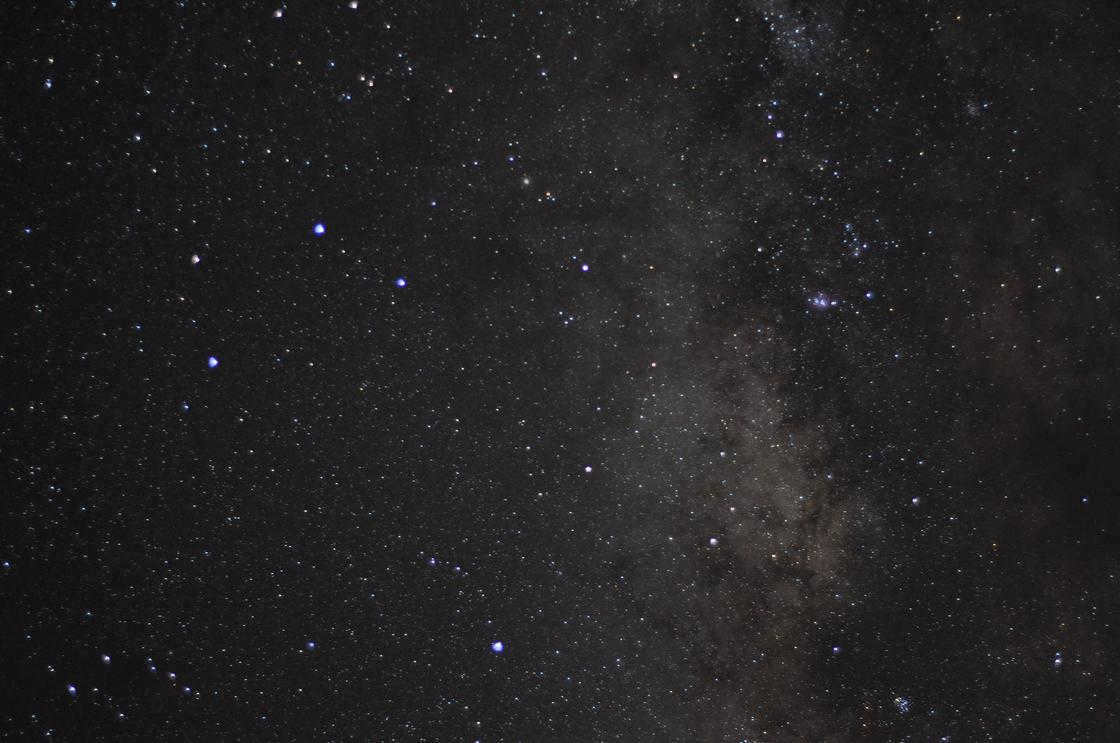
The luminosity of KW Sagittarius is approximately 370,000 times that of the Sun, and it has a diameter 1,460 times larger than our star. If KW Sagittarius were placed in the Sun’s position, its outer edge would extend to the midpoint between the orbits of Jupiter and Saturn.
V354 Cepheus
V354 Cepheus is a red supergiant located in the constellation Cepheus in the Northern Hemisphere. It is situated within the Milky Way, approximately 9,000 light-years away from Earth. The estimated maximum size of this star is 1 billion kilometers, which, if placed in the center of the solar system, would reach the orbit of Jupiter.
Despite the fact that V354 Cepheus has a luminosity 400,000 times greater than that of the Sun, it is not visible to the naked eye due to its distant position in the sky. However, when using a telescope, it is possible to admire this giant star located in the lower part of the Cepheus constellation.
Mu Cepheus
Mu Cepheus, also known as Herschel’s garnet star, is a red supergiant situated in the Cepheus constellation. It is one of the most powerful stars in the Milky Way Galaxy, with a size ranging from 650 to 1420 times larger than the Sun.
Cepheus can be observed throughout the year in the night sky, but the best time to see it is from August to January. This constellation can be easily located by its neighboring stars: it lies between Polaris, the W-shaped Cassiopeia, and the Swan constellation that resembles a cross or a bird. The star is positioned slightly below the brightest star in the Alderaminus constellation.
V509 Cassiopeia
V509 Cassiopeia is a yellow hypergiant star situated in the constellation of Cassiopeia. Its distance from Earth is approximately 7,800 light-years. The size of V509 Cassiopeia is estimated to be 400 to 900 times bigger than the Sun, with a mass 25 times greater.
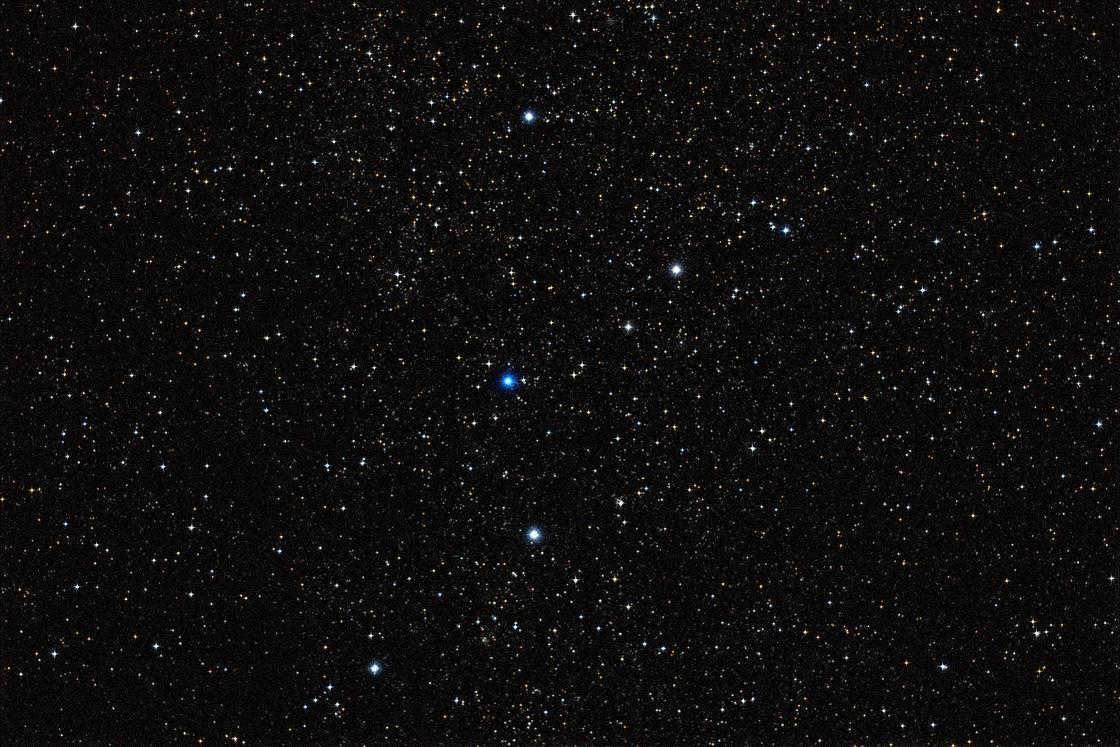
It is possible to observe the star with the unaided eye. As Cassiopeia is recognized as a constellation in the northern hemisphere, individuals in the RK can effortlessly appreciate the massive celestial body. Locating the Cassiopeia constellation is not challenging: it resembles the letter W. The upper part of the W points towards the Little Bear and Polaris.
Betelgeuse, a red supergiant, shines brightly in the night sky. Situated in the Orion constellation, Betelgeuse dwarfs the Sun, measuring 650-800 times larger. Its massive size is so immense that if it were positioned at the heart of our solar system, it would engulf Mercury, Venus, Earth, and Mars.
Despite its colossal dimensions, Betelgeuse’s mass is a mere 17 times that of our Sun. This colossal star is located at a distance of 500-600 light years.
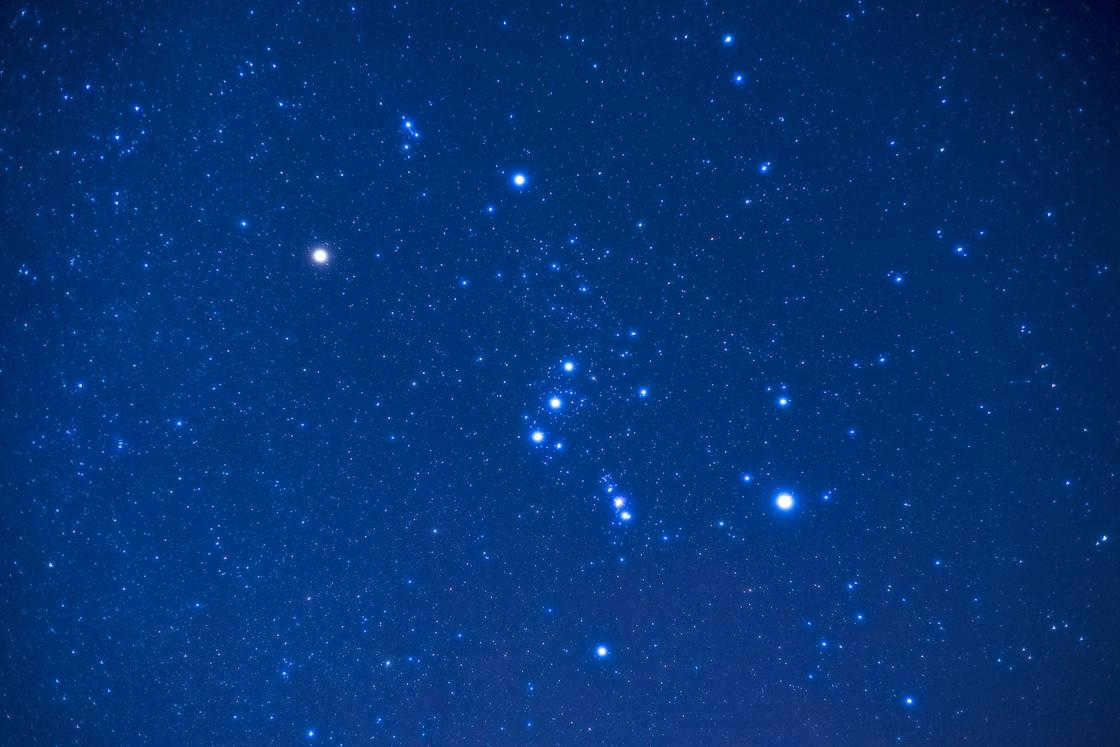
There are other historical names for the star:
All of them have the meaning of ‘hand’ or a part of it, because in the constellation Orion, Betelgeuse represents the arm or shoulder of a mythological character.
The star can be easily observed without any optical aid. It is most visible during the winter season when the constellation Orion is above the horizon. Betelgeuse is located in the upper left part of the constellation. Individuals with good eyesight will notice the reddish tint of the giant star.
Antares
Antares, a red supergiant, is among the most luminous stars visible in the nocturnal firmament. It maintains a relatively close proximity to our planet, with an estimated distance from the Sun of approximately 600 light-years. Situated within Bubble I, a nearby celestial region adjacent to the Local Bubble, Antares shares this area with other prominent stars such as Aldebaran, Alpha Centauri, Vega, Altair, Capella, and numerous others that encompass our Solar System.
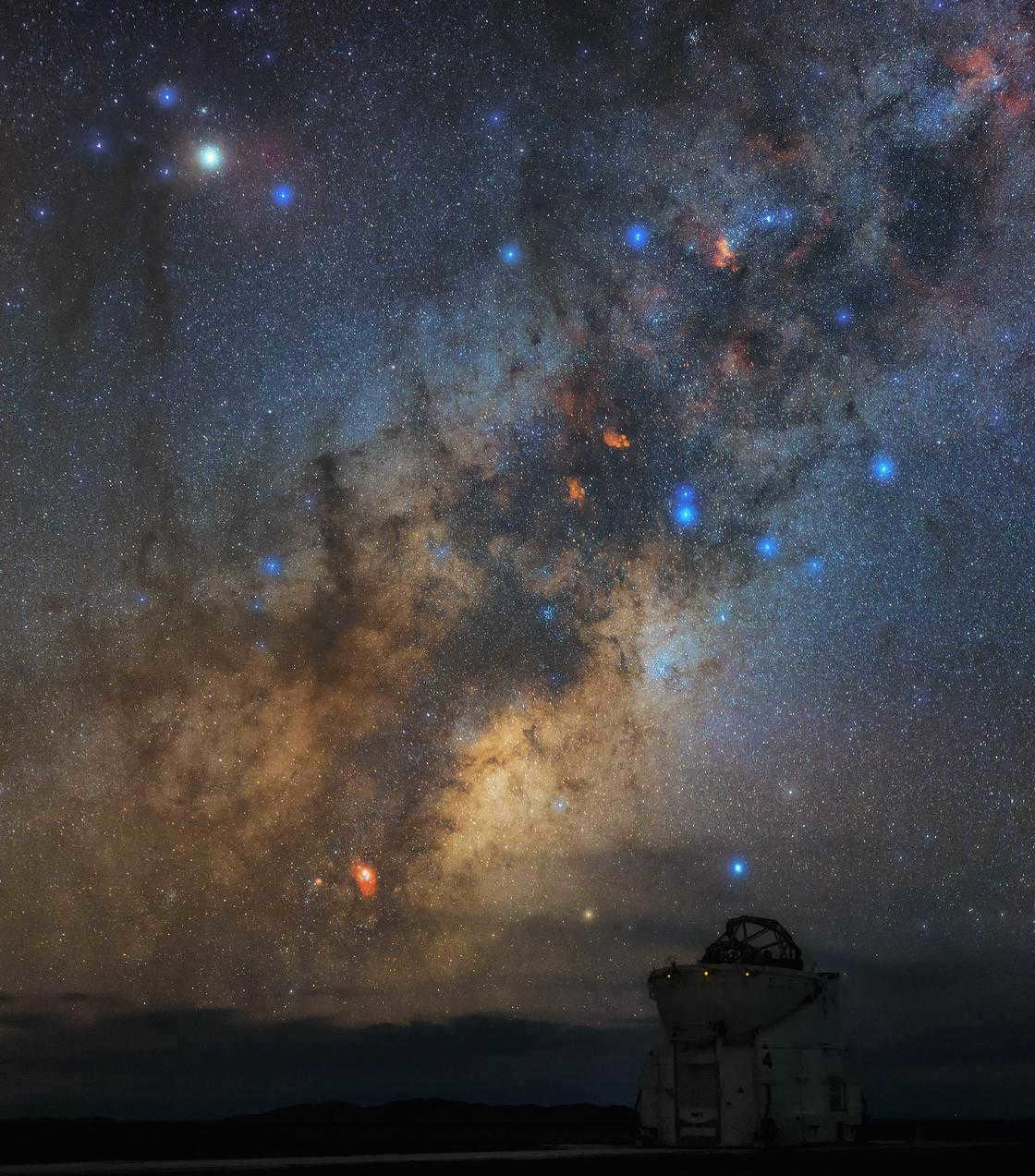
Antares has been a well-known star since ancient times. The ancient Egyptians constructed their temples in a way that the light of Antares played a significant role in their ceremonies. In ancient Persia, it was regarded as the star of royalty. In the Arab world, it was known as Kalb al-Aqrab, which means “the heart of the scorpion.”
This star shines so brightly because it is 400-600 times larger than the Sun and is in close proximity to Earth. If we were to place Antares at the center of our solar system, its size would engulf everything up to Mars and its corona would even touch Jupiter. The star is easily visible in late spring and can be found in the Scorpius constellation.

Our editorial team brings you an unparalleled collection of news
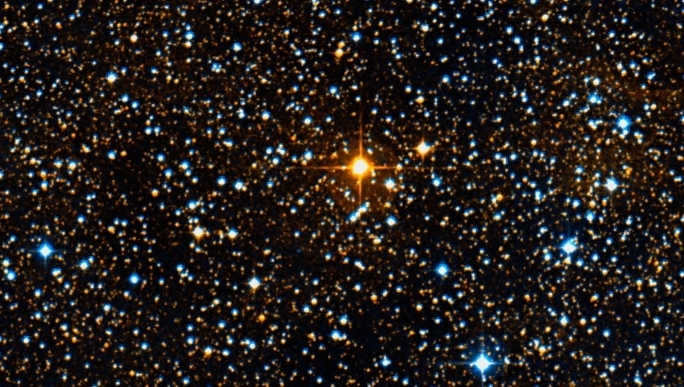
In the field of stars, modern astrophysics appears to be going through a new stage of development. The study of stars raises more questions than it provides answers. Therefore, when inquiring about the largest star in the Universe, one must be prepared for multiple responses. Are you inquiring about the largest star known to scientific community, or the theoretical limits imposed by science on a star’s size? In both cases, a definitive answer is unlikely to be obtained. The leading contender for the title of the largest star shares this position with its “neighboring” stars in a fairly equal manner. The extent to which it can be smaller than the true “king of the stars” also remains uncertain.
Is it the biggest one discovered?
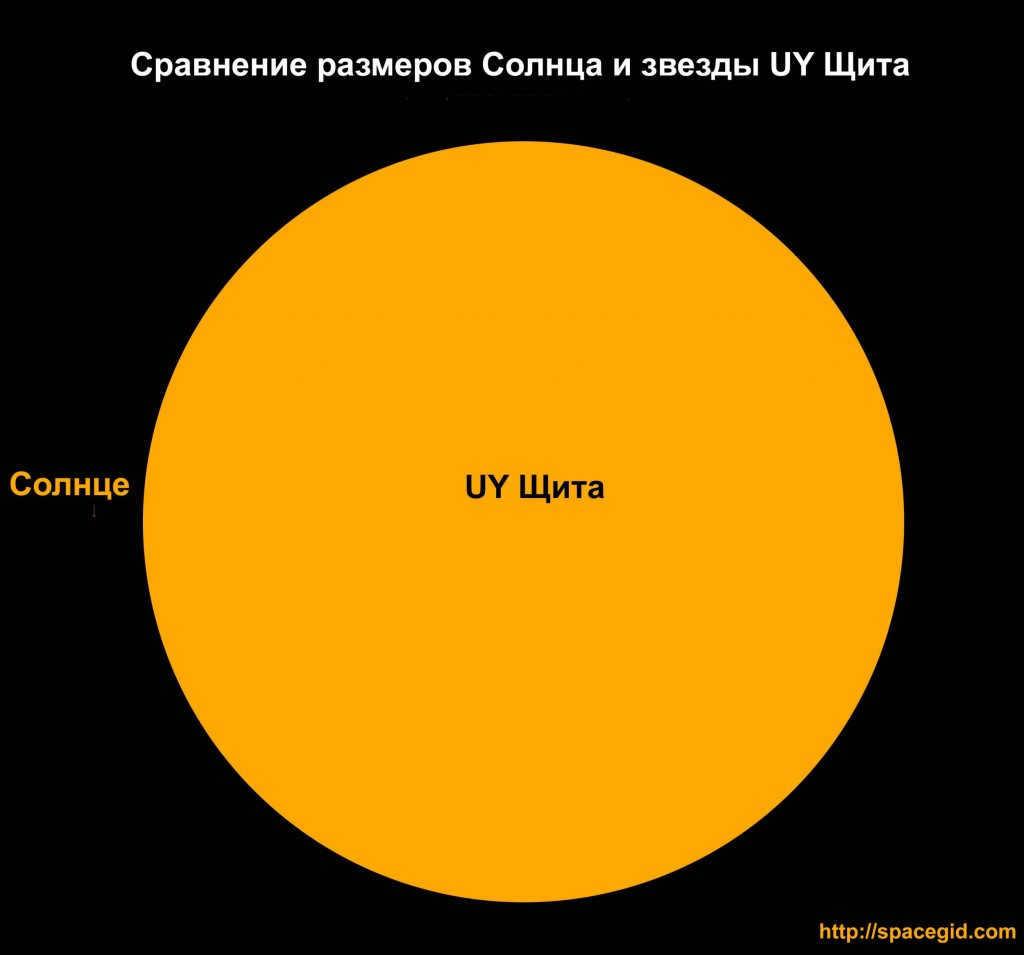
A comparison is being made between the size of the Sun and the star UY Shields. The Sun appears almost invisible when compared to UY Shields.
The UY Shields star, classified as a supergiant, can be considered the largest star currently observed. However, this classification comes with some reservations. UY Shields is located 9500 light-years away from Earth and can be seen as a dim variable star when observed through a small telescope. Astronomers estimate that UY Shields has a radius exceeding 1700 times that of the Sun, and during its pulsation period, this size can increase to as much as 2000 times.
Resources related to the subject
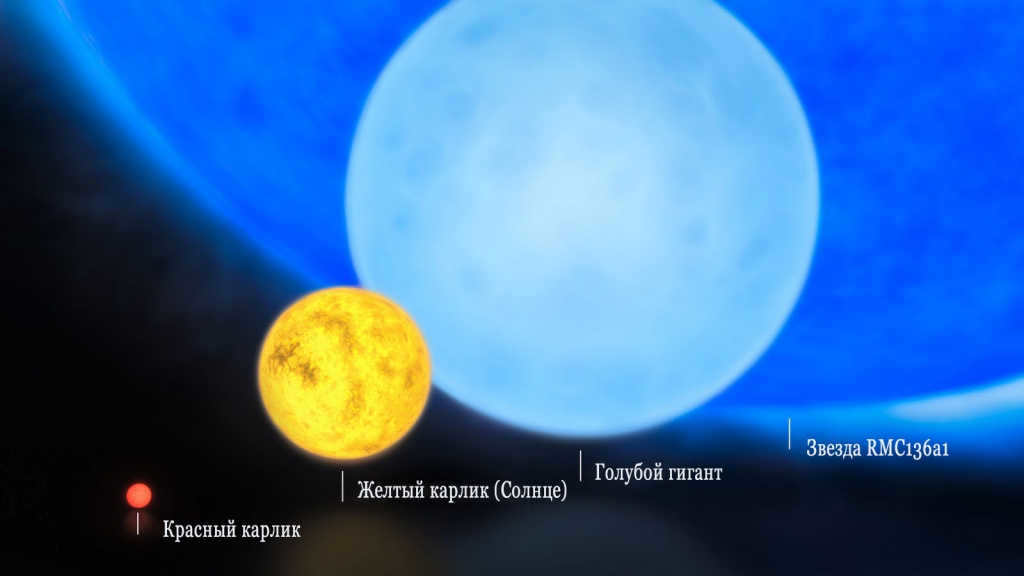
If we were to travel around such a star at the speed of light, it would take approximately 7-8 hours. It’s important to note that it only takes 8 minutes for light emitted by the Sun to reach our planet. To put it into perspective, if we were to travel at the same speed as the International Space Station (ISS), which completes one revolution around the Earth in an hour and a half, it would take around 36 years to complete a journey around the UY Shield. Now, let’s imagine the magnitude of these distances, considering that the ISS travels 20 times faster than a bullet and multiple times faster than commercial airliners.
The mass and brightness of the UY Shield
It should be noted that the size of UY Shield is incredibly huge compared to its other characteristics. This star is “only” 7-10 times larger than the Sun in terms of mass. Therefore, the average density of this supergiant is nearly a million times lower than the density of the air that surrounds us! To put it in perspective, the Sun’s density is one and a half times that of water, while a grain of matter from a neutron star weighs millions of tons. In simple terms, the matter in such a star has a density similar to the layer of atmosphere found approximately a hundred kilometers above sea level, which is known as the Karman line and serves as the conventional boundary between Earth’s atmosphere and space. Thus, the density of UY Shield is only slightly lower than that of the cosmic vacuum!

Additionally, the UY Shield lacks brightness. With a natural luminosity of 340,000 solar luminosities, it is significantly dimmer compared to the most radiant stars. A prime example is the star R136, which holds the title for the most massive star currently known (265 solar masses) and shines nearly nine million times brighter than our Sun. Surprisingly, R136 is only 36 times larger than the Sun. This means that R136 outshines UY Shield by 25 times and is approximately the same number of times more massive, despite being 50 times smaller than the giant.
Physical Characteristics of UY Shield
UY Shield is classified as a pulsating variable red supergiant with a spectral class of M4Ia. This places UY Shield in the upper right quadrant of the Hertzsprung-Russell diagram, which represents the relationship between luminosity and temperature of stars.
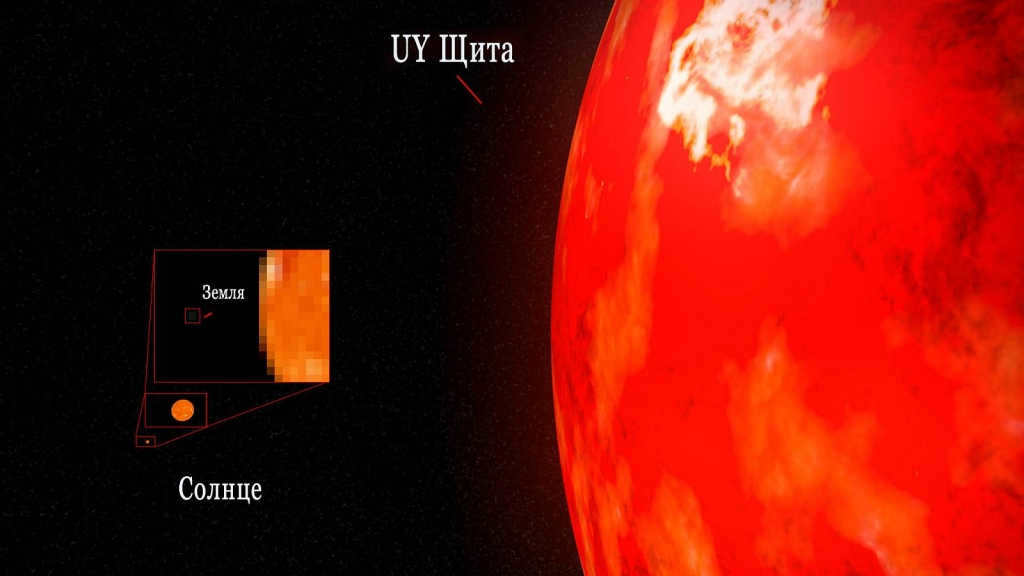
At present, the star is in the final phases of its life cycle. Similar to all supergiants, it has commenced the active burning of helium as well as other heavier elements. As per present-day theories, it is projected that within a few million years, UY Shield will transition into a yellow supergiant, subsequently transforming into a luminous blue variable or Wolf-Rayet star. The ultimate phase of its life cycle will be a supernova explosion, during which the star will discard its outer layer, most likely leaving behind a neutron star.
At present, the activity of UY Shield is evident as a semi-regular variable with an estimated pulsation period of 740 days. Considering the fact that the star can alter its radius from 1700 to 2000 solar radii, its expansion and contraction rate is comparable to that of spacecrafts! It loses mass at an impressive rate of 58 million solar masses per year (equivalent to 19 Earth masses per year). This is nearly one and a half times the mass of Earth per month. Therefore, millions of years ago when it was on the main sequence, UY Shield possibly had a mass ranging from 25 to 40 solar masses.
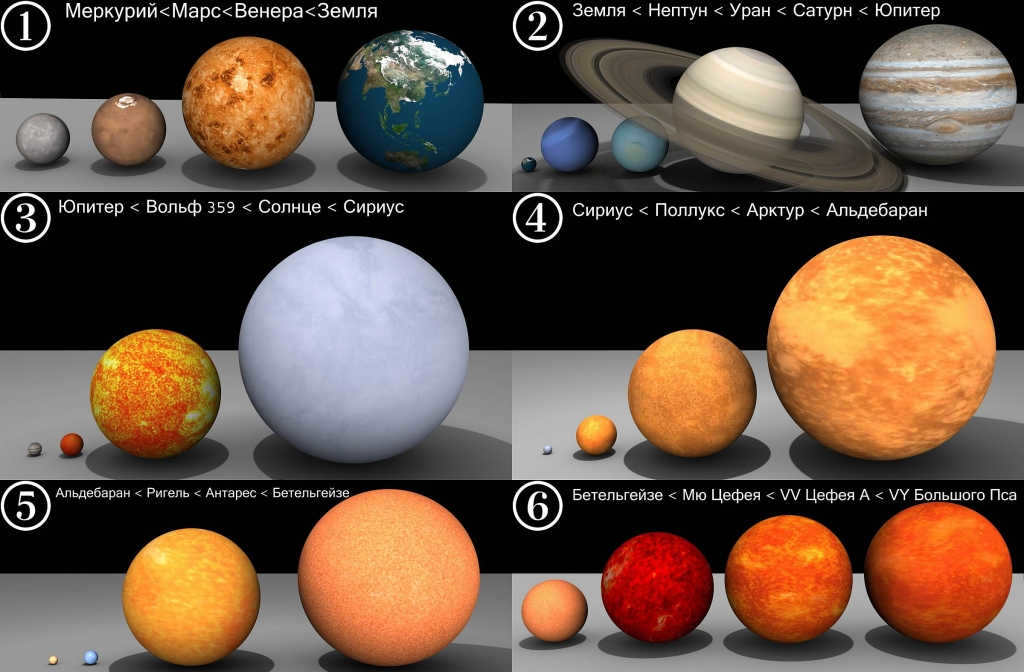
Comparison of sizes between planets and stars
When it comes to determining the largest known star, UY Shield is often considered the front-runner. However, due to the challenges faced by astronomers in accurately measuring the distance to stars, this claim is not entirely definitive. Large stars, like UY Shield, are known to be highly unstable and have complex structures. They can have extended atmospheres, opaque gas and dust envelopes, disks, or even a large companion star, such as Cepheus’ VV. Therefore, it is difficult to establish a clear boundary for such stars. The traditional notion of a star’s boundary as the radius of its photosphere is already highly subjective.
Thus, this figure can incorporate around twelve stars, including NML of Swan, VV of Cepheus A, VY of Big Dog, WOH G64, and several others. All of these stars are situated in the vicinity of our galaxy (including its satellites) and exhibit numerous similarities. Specifically, they are all red supergiants or hypergiants (for clarification on the distinction between super and hyper, refer below). Each of these stars will undergo a supernova event within a span of millions or even thousands of years. Additionally, they share similarities in terms of size, ranging from 1400-2000 times the dimensions of the sun.
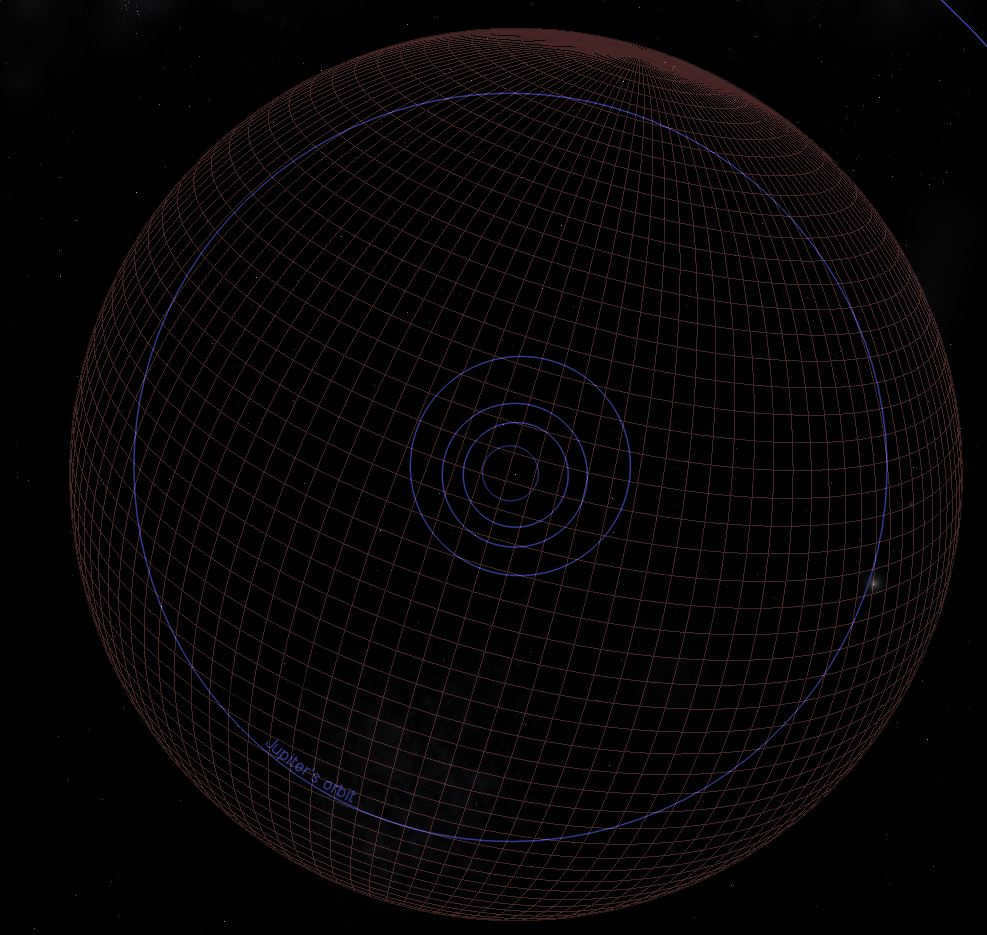
The size of VV Cepheus A is being compared to the orbit of Jupiter.
Each star in the galaxy has its own unique characteristics. For example, UY Shields stands out with its previously mentioned variable. Meanwhile, WOH G64 possesses a fascinating toroidal gas-dust shell. However, the most intriguing star is the double eclipsing variable known as VV Cepheus. This particular system consists of two stars, VV Cepheus A, a red hypergiant, and VV Cepheus B, a blue main-sequence star. These stars are located approximately 17-34 astronomical units apart. To put it into perspective, the radius of VV Cepheus B can reach up to 9 astronomical units, which is equivalent to 1900 solar radii. The proximity between these stars is so close that chunks of the hypergiant are being pulled towards its much smaller companion at incredible speeds. In fact, the blue star is nearly 200 times smaller than the red hypergiant.
Estimating the size of stars becomes problematic under these conditions. It is difficult to determine the size of a star when its atmosphere merges with another star or smoothly transitions into a gas-dust disk. This is especially challenging considering that the star itself is composed of very rarefied gas.
Furthermore, the largest stars are incredibly unstable and have short lifespans. These stars may only survive for millions or even hundreds of thousands of years. Therefore, when observing a massive star in a distant galaxy, one cannot be certain if a neutron star is now pulsating in its place or if a black hole, surrounded by remnants of a supernova explosion, is distorting space. Even if the star is thousands of light-years away, its existence or size as a giant cannot be definitively determined.
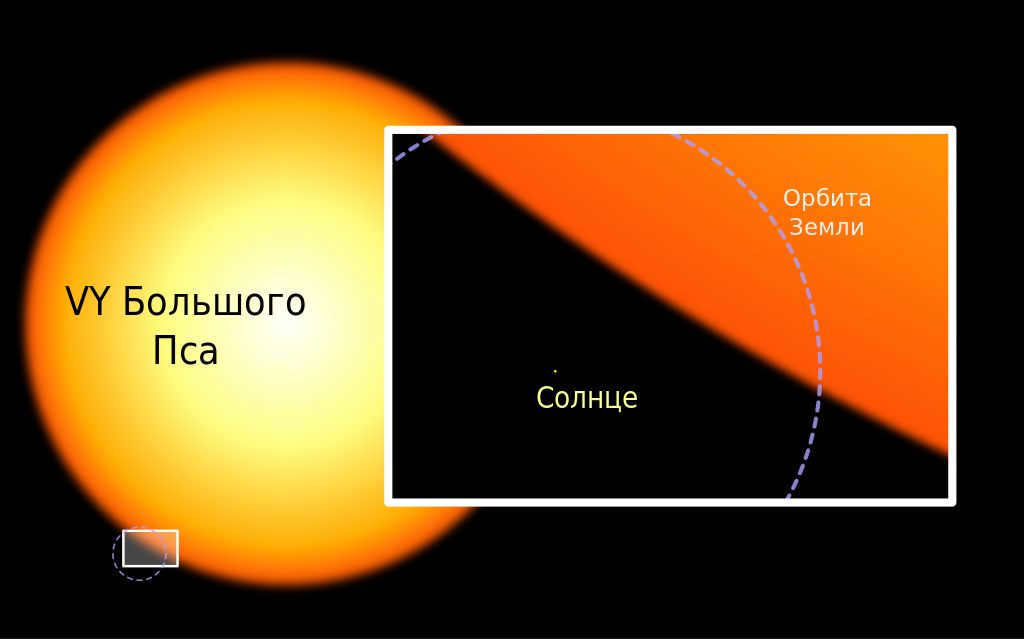
In addition to the limitations of current methods for determining the distance to stars and various unresolved issues, the identification of the largest star becomes a challenging task. Even among the dozen largest known stars, it is impossible to definitively determine a clear leader and rank them based on size. While UY Shields is commonly regarded as the most likely candidate for the top position among the “big ten,” this does not exclude the possibility of other stars like NML of the Swan or VY of the Big Dog being larger. As a result, different sources may provide different answers to the question of the largest known star. This discrepancy does not reflect the incompetence of these sources, but rather highlights the fact that science cannot always provide unequivocal answers to seemingly straightforward questions.
The Biggest Star in the Universe
When it comes to determining the largest star in the Universe, it becomes a challenging task. With the immense number of stars present within the observable Universe, it is impossible for scientists to pinpoint the absolute largest one. In fact, the estimated number of stars within the observable Universe is ten times greater than the number of grains of sand found on all the beaches in the world. However, it is crucial to note that our current telescopes can only observe a fraction of these stars. Additionally, the size of a star does not necessarily correspond to its brightness, which further complicates the search for the “stellar leader.” Even the brightest stars will pale in comparison when observing distant galaxies. A prime example is R136, a star that is not the largest but is one of the brightest in the Universe.
Keep in mind that when we observe a massive star in a faraway galaxy, what we’re actually seeing is its “specter”. As a result, the quest to discover the biggest star in the universe is not only unattainable, but also futile.
Hypergiants
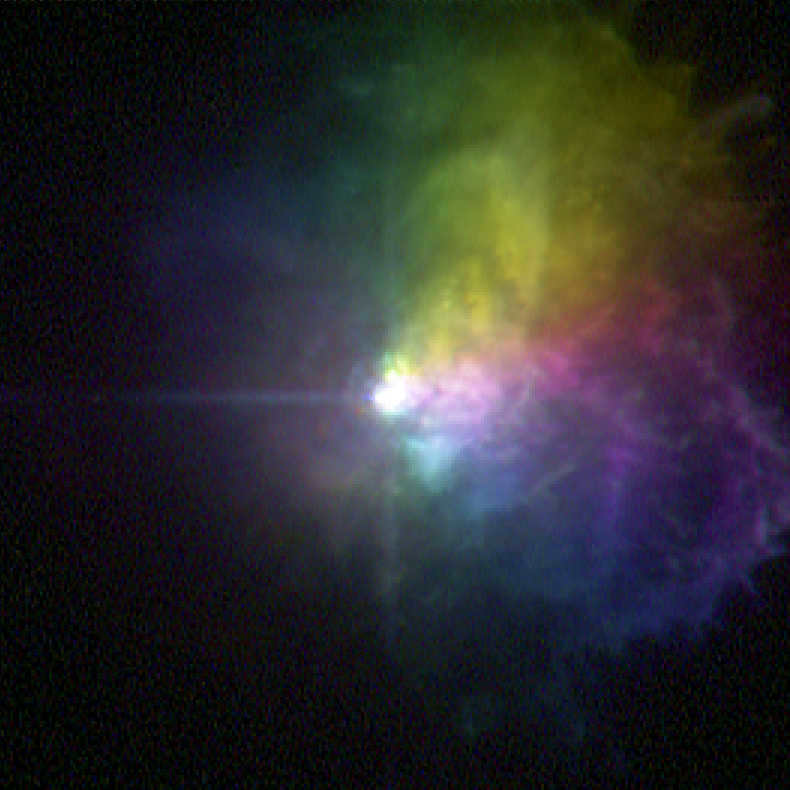
The hypergiant VY in the constellation Canis Major emits a massive quantity of gas during its explosive event.
If locating the largest star proves to be practically impossible, perhaps we should endeavor to understand it theoretically. In other words, we should determine a threshold beyond which an object can no longer be classified as a star. However, even in this aspect, contemporary science encounters difficulties. The present-day theoretical model of stellar evolution and astrophysics fails to account for many of the phenomena that are actually observed through telescopes. Hypergiants serve as a prime example of this.
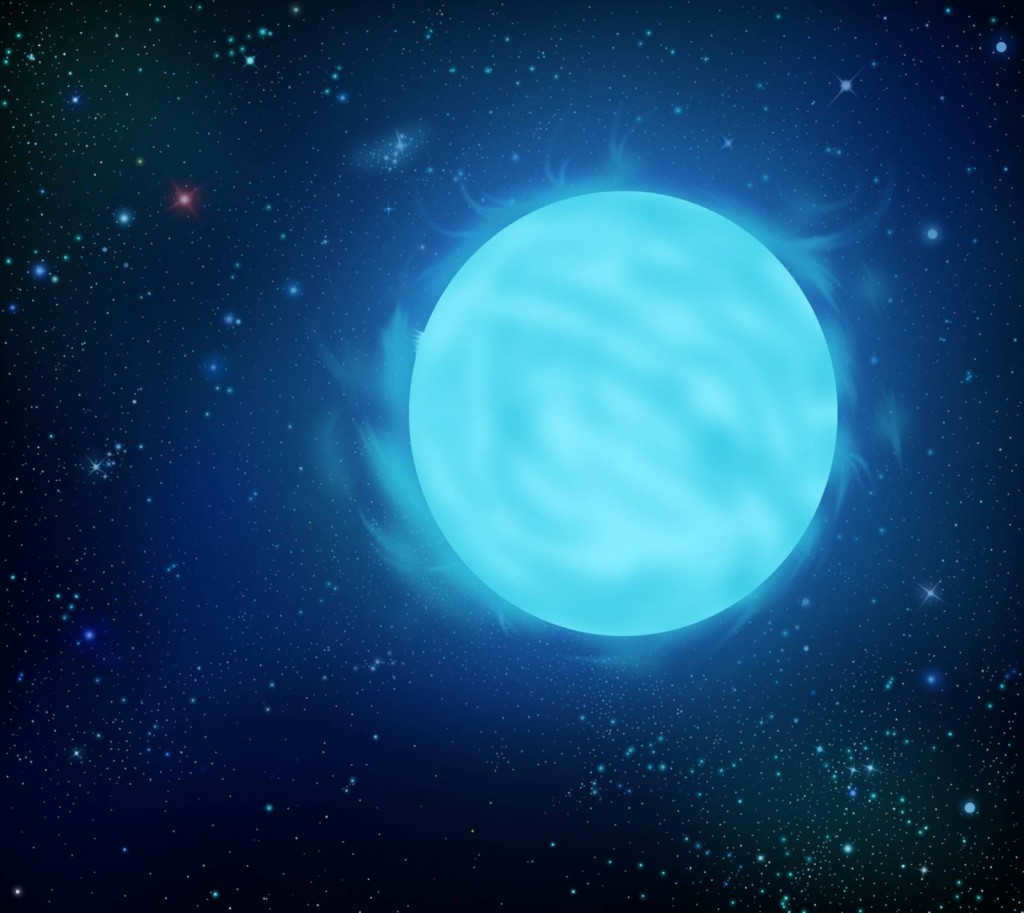
An illustration of R136a1
R136a1 is currently the most massive star known. There are a few other stars with significant mass, although they can be counted on one hand in our galaxy. These types of stars are known as hypergiants. It is worth noting that R136a1 is actually smaller in size compared to stars that may appear lower in class, such as the supergiant UY Shield. This is because hypergiants are defined by their mass rather than their size. They are classified separately on the spectrum-luminosity diagram as class O, which is positioned above the supergiant class (Ia). The exact threshold for the mass of a hypergiant is yet to be determined, but as a general guideline, their mass exceeds 100 times that of our Sun. None of the largest stars in the Big Ten reach these mass limits.
An impasse in theory
Contemporary science is unable to elucidate the essence of the existence of stars exceeding 150 solar masses. Consequently, the inquiry arises as to how a theoretical boundary for the magnitude of stars can be ascertained, given that the dimensions of a star, unlike its mass, are imprecise by nature.
Let’s consider the fact that the exact nature of the first generation stars and their future evolution in the universe is still unknown. Changes in the composition and metallicity of stars can potentially have profound effects on their structure. Astrophysicists are constantly faced with the unexpected discoveries and theoretical advancements that further observations bring. It’s very possible that UY Shield could be just a tiny speck compared to a hypothetical “king-star” that shines or will shine in the farthest reaches of our universe.
Did you enjoy the video? Share it with your friends!
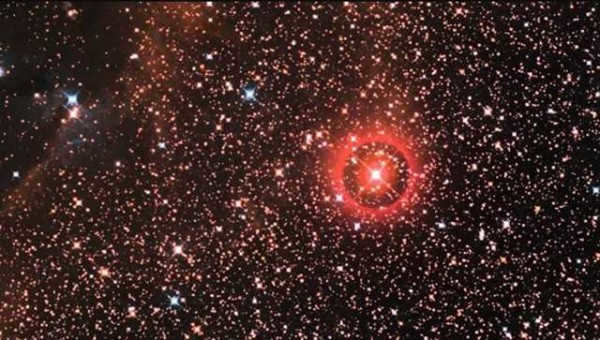

Are you aware of which celestial body holds the title for being the largest star in the universe? Surprisingly, it is not our very own Sun, despite it being the central luminary and the foundation of our entire solar system. In fact, the Sun doesn’t even make it into the top ten list of the largest and brightest entities in the vast expanse of outer space. Moreover, this ranking is subject to constant changes as advancements in astronomical research technologies continue to unfold.

UY Shield image
In this article, we will provide information about the most massive and brightest stars that have been identified to date. We will discuss their key characteristics, location, and compare these celestial bodies to our Sun.
The most massive known star
The title for the largest star in the universe belongs to UY Shield (Latin: UY Scuti). This massive star is situated in the constellation of the same name, approximately 9.5 thousand light-years away from our solar system. UY Shield was first discovered by astronomers from the German city of Bonn in 1860.
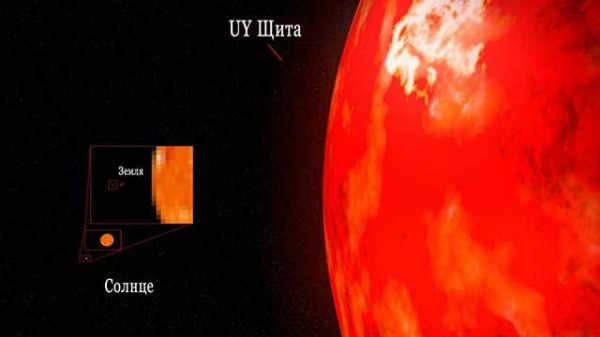
UY of the Shield
Physical parameters
The largest star in the Universe has a radius that is 1708 times greater than the radius of the Sun. And during its pulsation, it expands to the size of 1,900 Suns. However, despite its massive size, UY Shield is relatively light. It continuously loses a significant amount of matter, and currently, its mass is equivalent to that of ten Suns.
UY Shield is the second brightest star in the entire universe. It surpasses our Sun by 340,000 times in terms of brightness. However, so much gas and dust have accumulated around it that it cannot be observed with the naked eye (11th apparent magnitude). Additionally, its luminosity varies, making UY Shield a variable star.
Most Massive Star in the Universe
Sitting atop the cosmic throne of the heaviest stars in the universe is R136a1, which can be found in the Tarantula Nebula. This celestial body of plasma resides within the Large Magellanic Cloud galaxy, a staggering 163,000 light-years distant from our very own Milky Way.
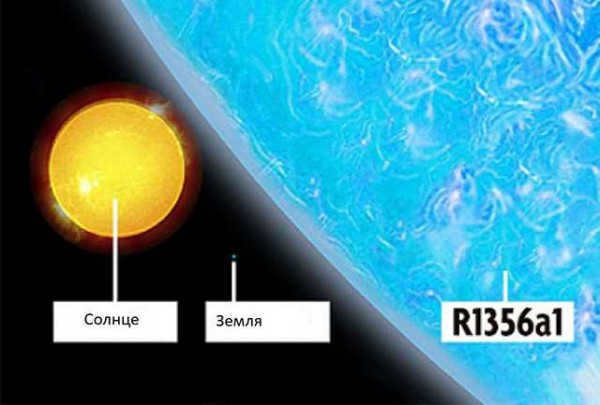
The discovery of R136a1 was made in 2010 by British astronomer Paul Crowther and his research team. During their study of the RMC 136a cluster, they stumbled upon an object of immense size. This object has the highest luminosity among all the stars in this cluster and even in the entire observable Universe.
Unique Characteristics of the Stellar Giant
R136a1 is classified as a blue hypergiant, an exceptionally rare type of star with extraordinary size, mass, and luminosity, but a relatively short lifespan.
With a mass exceeding 315 times that of the Sun, this stellar giant presents a puzzling phenomenon for scientists, as it was previously believed that no celestial body could possess a mass greater than 150 solar masses. However, this limitation is specific to primary celestial luminaries formed from helium-hydrogen clouds. R136a1 likely formed through the fusion of multiple massive objects, which accounts for its unusually high mass.
Having a radius equivalent to 36 solar radii and shining nearly 9 million times brighter than our Sun, this hypergiant emits powerful streams of ions akin to the solar wind due to its immense size. Consequently, the presence of life on celestial bodies in close proximity to R136a1 is rendered impossible.
The biggest star in our galaxy
We have already discussed the largest star known to exist in the universe. However, this massive star is located at a great distance from Earth, making it nearly impossible to spot with the naked eye. Nevertheless, our own galaxy is home to some giants as well. Leading the pack is Eta Kylia, a unique system composed of two objects orbiting a common center of gravity.
Located in the constellation of Kiel, the largest star in the Milky Way can be observed in the southern hemisphere of the night sky. It takes approximately 7500 years for its light to travel the immense distance and reach Earth.
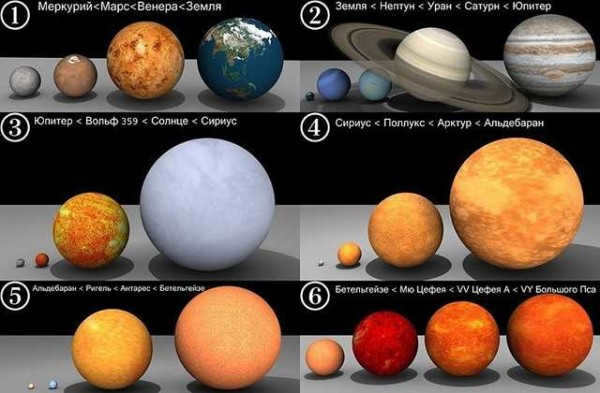
The Eta Kiel system is composed of two entities, specifically the blue hypergiant Eta Kiel A and the blue star η Car B.
The primary constituent of the system is categorized as a variable luminary, possessing a mass equivalent to 150 Suns and a radius of approximately 800 solar radii. This luminary is rapidly shedding stellar material and is on the verge of undergoing a supernova event. η Car B, on the other hand, is 30 times more massive and 20 times larger than the Sun. It exhibits a surface temperature surpassing 37*10³ K. Unlike the primary component, our understanding of this entity within the Eta Kila system remains limited.
The components of the Eta Keel system exhibit significant variations in both mass and size. The primary component, known as the hypergiant Eta Kyla A, is an immense variable star. It possesses a mass 150 times greater than that of the Sun and a size almost 800 times larger. This celestial body is among the most unstable entities found in outer space, as it is currently undergoing rapid mass loss, which will eventually culminate in a supernova explosion.
Component B, also referred to as η Car B, belongs to the O spectral class. It boasts a mass equivalent to 30 solar masses and a radius 20 times that of the Sun. η Car B orbits around the primary component of the system in a manner reminiscent of a satellite.
Due to the varying luminosity of Eta Kiel A, the overall brightness of the system is constantly changing. The most recent recorded peak in luminosity occurred during the 1940s, when the largest star in the Milky Way was 50 million times brighter than the Sun. Subsequently, there was a pseudo-supernova explosion that caused the luminosity of Eta Kiel to decrease by a factor of 10. It has remained at that level to this day. The second component of the system is several hundred thousand times brighter than the Sun.
The explosion of Eta Kiel A will not pose a threat to all life on the Earth’s surface. However, it has the potential to disrupt satellites in Earth’s orbit and impact the thickness of the ozone layer in the atmosphere.
Top 10 colossal entities
The Metagalaxy is home to numerous celestial bodies that surpass the Sun in size. Here, we present a compilation of the ten largest stars in the Universe:
- UY of the Shield
- VY of the Big Dog is a hypergiant located in the constellation of the same name, situated 1170 parsecs away from our Solar System. With a radius of 2,000 solar radii, it shines 270,000 times brighter than our own star.
- VV Cepheus is a binary star system found in the constellation Cepheus, residing 5,000 light-years from Earth. As part of the red hypergiants group, it surpasses the Sun by 1,700 times in size and 200,000 times in brightness.
- MY Cepheus also resides in the constellation Cepheus and belongs to the red hypergiants group. It boasts a radius of 1,600 solar radii.
- WOH G64, situated in the Pisces constellation, is a red supergiant. The light emitted from this star takes approximately 163,000 years to reach our solar system. WOH G64 is astonishingly enormous, with a size ranging from 1540 to 2200 times the radius of our own Sun. Additionally, its luminosity is an impressive 500,000 times that of our Sun.
- V354 Cepheus, on the other hand, dwarfs the Sun in both size and brightness. This star is estimated to be 690 to 1250 times larger than our Sun and an astounding 400,000 times brighter.
- KY Swan, located in the constellation of the same name, is positioned 5 thousand light years away from Earth. With a radius of 1,450 solar radii, KY Swan is truly a massive star.
- KW Sagittarius, a red supergiant, surpasses our Sun in size by a staggering 1460 times.
- RW Cepheus, similar to other supergiants, is also significantly larger than our Sun. Its size is estimated to be between 1250 and 1650 solar radii.

Stars are the primary sources of light in the Universe. Additionally, the Sun, which is the closest star to us, serves as the main energy source for life on Earth. It’s astonishing to consider the vast difference in size between our small blue planet and the mighty Sun. In fact, the Sun is over a million times larger than the Earth! Although stars are some of the largest objects in space, they can vary significantly in size.
Illusory spots in the heavens

“The Odyssey will serve as our vessel for exploring the stars.
When we gaze up at the night sky, we are mesmerized by the countless array of luminous specks. It’s as if an abundance of pearls, varying in size, brightness, and hue, have been scattered across the dark celestial canvas. At first glance, all the stars appear to be uniform in size, with the exception of the planets, of course. Let’s imagine that we have a compact spacecraft, resembling a fighter jet in appearance. This spacecraft will be equipped with a state-of-the-art engine, capable of functioning with the same fuel capacity as a standard airplane. We shall name it “Odysseus”.
Star or no star?
So, our spacecraft, the Odyssey, is currently in orbit around the binary star system known as Gliese 229. This system is located a mere 19 light years away from our own sun. Our main focus of interest is Gliese 229 B, a celestial object that is even smaller than the mighty planet Jupiter. We have been inputting the necessary parameters into the ship’s computer in order to successfully enter orbit around this intriguing object. However, our autopilot suddenly alerts us to a critical issue – the data we manually entered is incorrect, causing the ship to rapidly descend. In a desperate attempt to rectify the situation, the computer swiftly adjusts the thrust, increasing it by a significant magnitude. It is soon revealed that Gliese 229 B, despite its smaller size in terms of physical dimensions, is actually a staggering 25 times more massive than Jupiter.
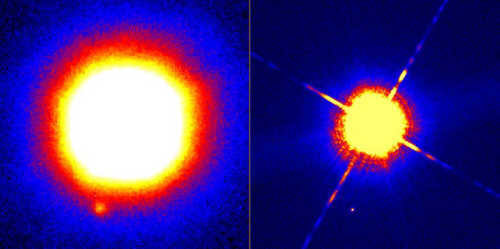
There has been ongoing discussion regarding whether to categorize the celestial objects known as brown dwarfs as stars or as something else. At present, they are generally understood to be sub-stellar bodies composed primarily of hydrogen, with sizes ranging from 0.012 to 0.0767 times the mass of our Sun. To put that in perspective, this is similar in size to the planet Jupiter. Within the core of brown dwarfs, thermonuclear processes occur, much like in regular stars. However, the primary source of heat release in brown dwarfs is the fusion reaction of isotopes of light elements such as lithium, beryllium, boron, and deuterium, rather than the classical proton fusion seen in stars. Brown dwarfs are believed to make up a significant portion of the stellar population in the universe. In fact, some astronomers speculate that they may even contribute to a substantial portion of the elusive dark matter. Anyway, let’s move on!
Starting from the tiniest

What are the dimensions of the stars in our home galaxy, the Milky Way?
Let us ponder on the sizes of the tiniest constituents of this particular category of celestial bodies. We instruct the onboard computer to navigate towards the closest neutron star, and behold, we find ourselves approaching a minuscule star that goes by the peculiar moniker of RX J1856.5-3754.
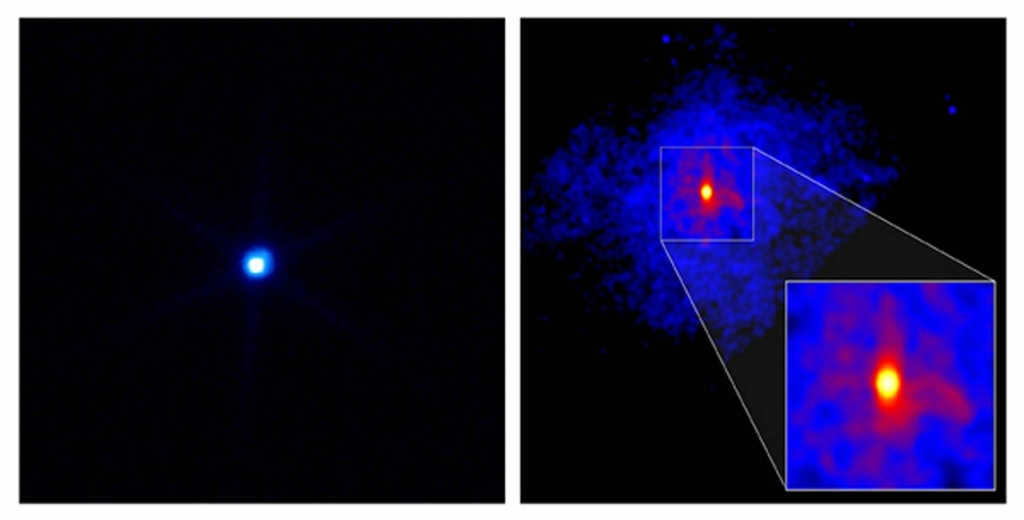
An X-ray image of RX J1856.5-3754 captured by the Chandra telescope.
“Odyssey” floated high above the surface of the tiny celestial body, which measures only 10-20 kilometers in diameter, but our engines are rapidly accelerating, and the data on the screens suggest that we are in orbit around the Sun! And here is where the first surprise awaits us! The smallest members of the stellar family have a diameter of approximately 15 kilometers. However, their mass surpasses that of the Sun. Just imagine the incredible density of a neutron star. After performing basic mathematical calculations, it becomes evident that the matter there is packed even more densely than in an atomic nucleus.
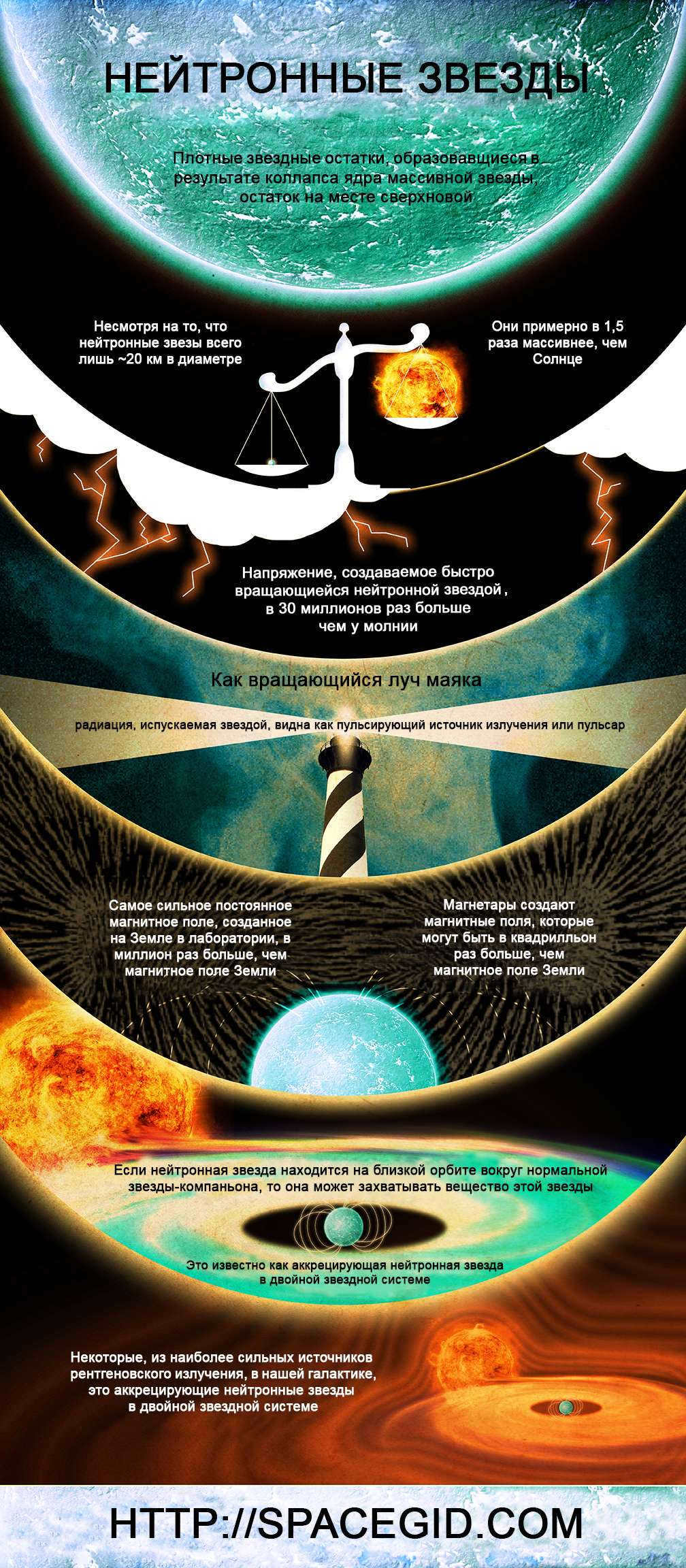
One image encapsulates the essence of neutron stars
Summoning our bravery, we venture deeper to obtain a more detailed view of the celestial body. However, the cockpit alarm suddenly erupts, alerting us to the presence of an immense magnetic field.
Additional Resources
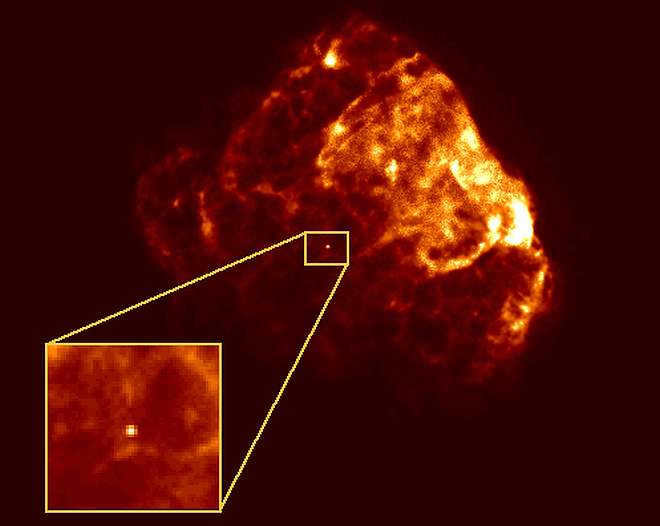
The van Maanen star
The star known as van Maanen’s Star is a white dwarf located in the constellation Pisces. It was discovered by Dutch-American astronomer Adriaan van Maanen in 1917. This star is notable because it was the first white dwarf to have its proper motion measured, which is the apparent motion of a star across the sky due to its actual motion through space. Van Maanen’s Star has a relatively high proper motion, indicating that it is moving quickly through space. This has led scientists to believe that it may be a runaway star, ejected from its original location by a close encounter with another star or a supernova explosion. The van Maanen star is also interesting because it is one of the closest white dwarfs to Earth, with a distance of only about 14.1 light-years. Despite its relatively close proximity, the van Maanen star is not visible to the naked eye, as it has a magnitude of around 12.6. However, it can be observed with a telescope, making it a popular target for amateur astronomers. Overall, the van Maanen star is a fascinating object in the night sky, providing valuable insights into the nature and behavior of white dwarf stars.
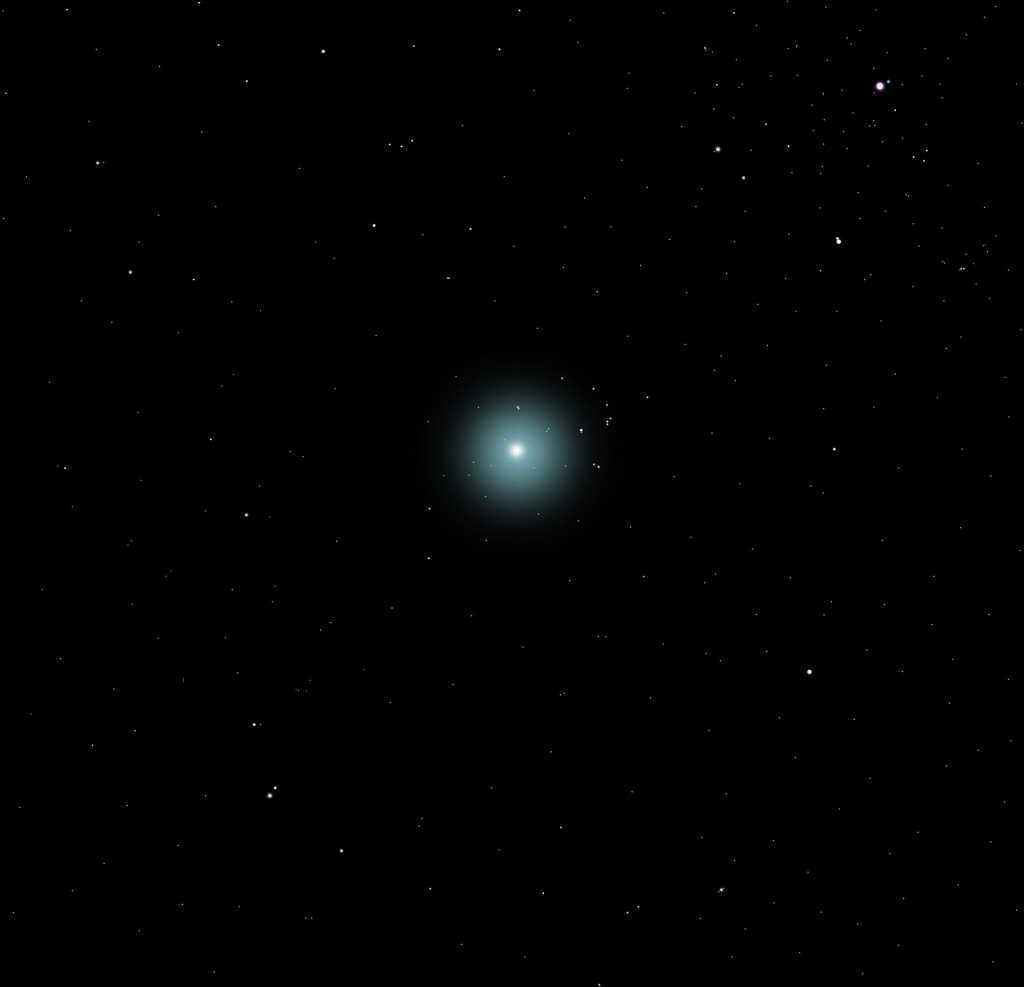

“The Odyssey spacecraft is currently in orbit around Van Maanen’s Star, which is the closest white dwarf to the Sun, located 14.1 light-years away. The view is quite disheartening. What we see is essentially a lifeless body, the remnants of a star that existed before it fully evolved. White dwarfs are incredibly small, only about one hundredth the size of the Sun, but their mass is comparable. These stars are essentially the cooled-down cores of dead stars, and their only source of light is the residual heat from their plasma matter. In the vast expanse of stars, white dwarfs are one of the most common types, with red dwarfs being another prominent category. With a simple command, we can swiftly transition to orbiting Proxima Centauri.”
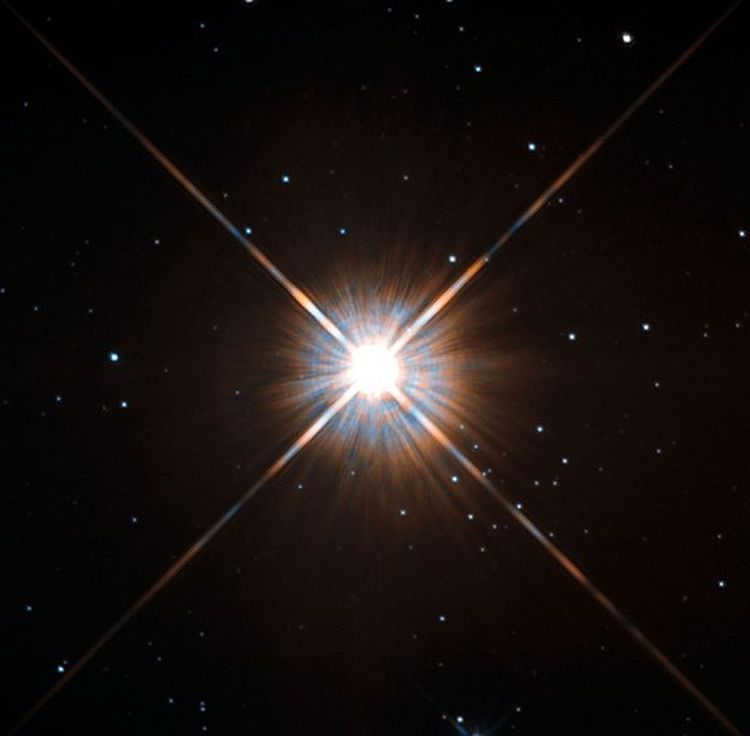
In the immensity of the cosmos, there exists a diminutive crimson star that emits a feeble radiance. These stars possess a size and mass that is less than one-third of a star thousands of times smaller than the Sun in both size and luminosity.
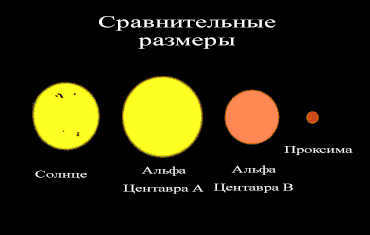
According to a wide range of astronomers, red dwarfs are considered to be the most abundant category of “genuine” stars in the vast expanse of the Universe. The rationale behind this assertion lies in the fact that all other aforementioned stars cannot be classified as authentic stars. Only red dwarfs possess the quintessential proton thermonuclear reactions that endow them with the ability to endure for several hundreds of billions of years.
This seemingly unpretentious celestial body is highly likely to outlast the Sun by a significant margin. If humanity ever aspires to locate a star in the cosmos that can offer us refuge once our native star perishes, we won’t have to venture very far. From the standpoint of interstellar distances, of course.
Let’s examine the yellow dwarfs. Indeed, our Sun is classified as a yellow dwarf! To be more precise, it belongs to the spectral class G2V. These particular stars are relatively scarce in the vast expanse of the Universe. Yellow dwarfs typically have masses ranging from 0.8 to 1.2 times that of our Sun. Once these sun-like stars deplete their hydrogen fuel, they expand in size and transform into red subgiants and giants. The Odyssey has little interest or need to carry on with the feast.
Betelgeuse
Betelgeuse, also known as Alpha Orionis, is one of the brightest and most well-known stars in the night sky. It is located in the constellation Orion and is classified as a red supergiant. Betelgeuse is approximately 640 light-years away from Earth and is one of the largest stars known, with a diameter of about 900 times that of the Sun.
Despite its size, Betelgeuse has a relatively short lifespan compared to smaller stars. It is estimated to be about 8 to 8.5 million years old and is expected to go supernova within the next million years. When it does, Betelgeuse will briefly become one of the brightest objects in the sky and may even be visible during the day.
Scientists have been closely monitoring Betelgeuse in recent years due to its irregular brightness patterns. In late 2019 and early 2020, the star experienced a significant drop in brightness, leading to speculation that it was on the verge of going supernova. However, the star has since returned to its normal brightness, and researchers continue to study it to better understand the dynamics of red supergiants.
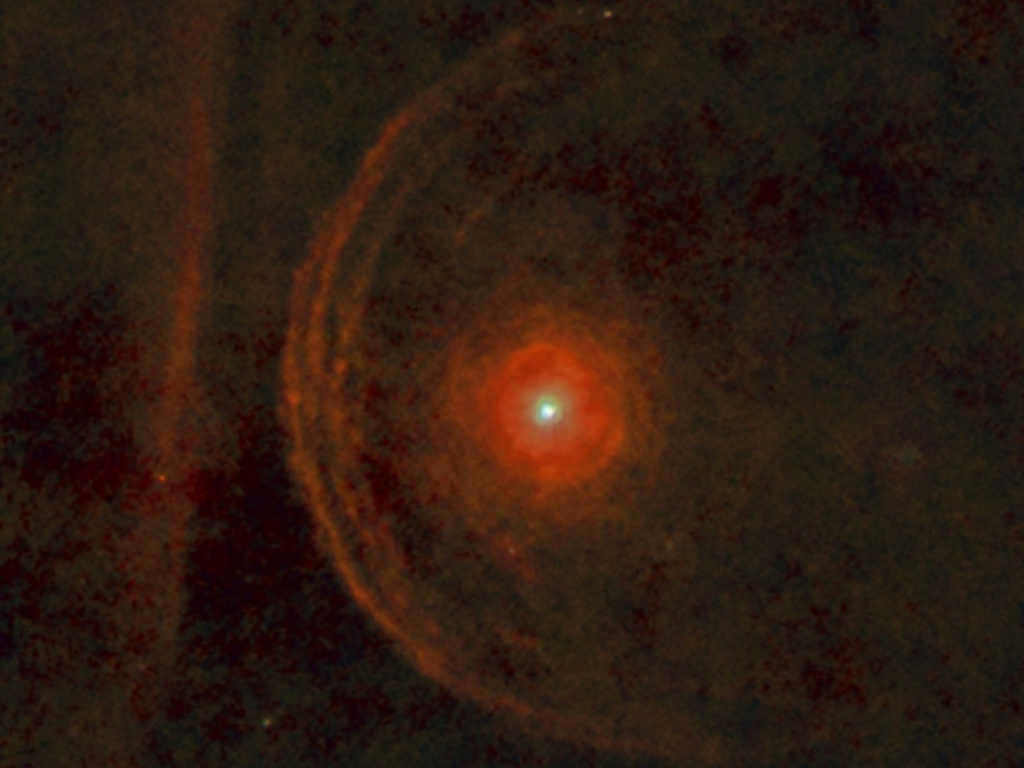
Alnitak
Alnitak, also known as Zeta Orionis, is a triple star system located in the constellation Orion. It is one of the brightest stars in the night sky and is part of Orion’s Belt, a distinctive line of three stars that are easily visible to the naked eye. Alnitak is approximately 736 light-years away from Earth and is classified as a blue supergiant. It is estimated to be over 30 times more massive than the Sun and shines with a luminosity over 100,000 times greater. Alnitak is a young star, with an estimated age of only a few million years. It is surrounded by a disk of gas and dust, which may eventually form planets. Alnitak is a fascinating object of study for astronomers and continues to reveal new insights into the formation and evolution of stars.
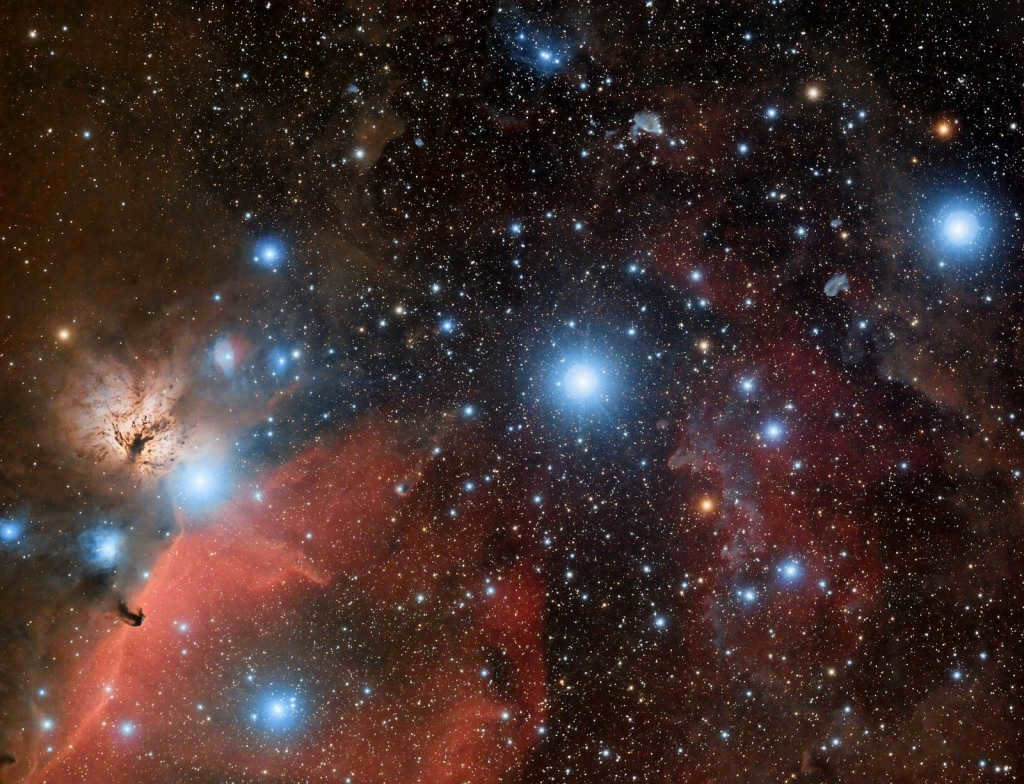
Alnitak, Alnilam and Mintaka are the three stars that make up the belt of Orion, one of the most recognizable constellations in the night sky. These stars are also known as the “Three Kings” or the “Three Sisters”. They are located in the constellation of Orion, which is visible from both the Northern and Southern Hemispheres.
However, while these crimson “chubby fellows” are representations of stars that have already reached an advanced age, young stars are characterized by their blue giants and supergiants. Our spacecraft enters the orbit of Alnitak, a colossal blue giant situated in the constellation of Orion, suspended in the vast expanse of space 800 light years away from our planet Earth. Our computer system notifies us that we can only observe this particular star through a video camera equipped with special filters, as its luminosity exceeds that of the Sun by a staggering 35,000 times! It is worth noting that blue giants are so intensely hot that they barely have a chance to live a life that adheres to stellar standards. While yellow dwarfs can survive for up to 10 billion years and red dwarfs theoretically have the capacity to endure for 100 billion years, blue giants and supergiants literally incinerate in the blink of an eye. What significance does a lifespan of 10 to 50 million years hold for a celestial body? Despite the foreboding connotations associated with their name, these stars are relatively modest in size, measuring no more than 25 times the radius of the Sun. In the case of Alnitak, its radius is 18 times that of the Sun, as is its mass.
Antares
can be rephrased as
The star Antares
or
The celestial body known as Antares
.
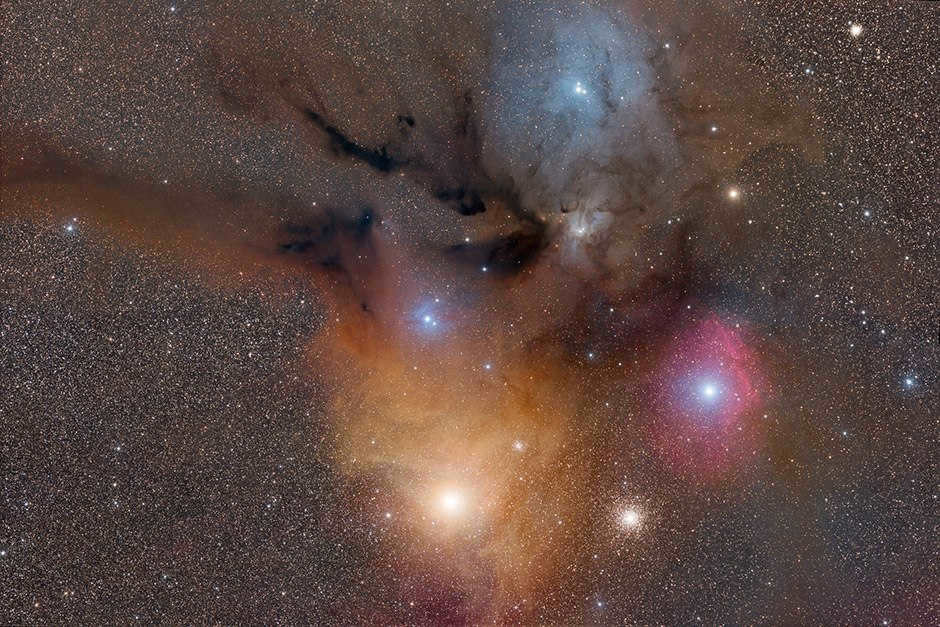
A nebula located near Antares and Rho Serpens.
In the vast expanse of infinite space, there exist colossal supergiants. The modest Odyssey spacecraft takes us on a journey to the high orbit of Antares, the most luminous star in the Scorpius constellation, situated 600 light-years away from our Sun. To obtain a closer view, we instruct the computer to position itself at a distance of 1.4 astronomical units from the star’s core. However, the system warns us that we would be positioned beneath the star’s surface. How is that possible? We would essentially be at a distance equivalent to that of Mars’ orbit from the core of Antares. It appears that the radius of red supergiants can sometimes be 800 times greater than that of the Sun. Nevertheless, Antares possesses a mass only 12.4 times that of our Sun and its gas is highly rarefied.
The Importance of Shields


Comparing the UY of Shield to that of the Sun.
Before concluding our journey, we are tasked with taking Odyssey to the most massive star discovered to date. We find ourselves orbiting UY Shield, positioned at a distance from its core equivalent to the distance between Saturn and the Sun. However, our entire field of vision is nearly obstructed by the immense red giant disc of this star, which boasts a radius 1700 times larger than the Sun but is only 40 times more massive. If we were to place UY Shield at the center of our solar system, it would engulf all the planets up to Jupiter. To put it into perspective, if we were to shrink the Earth to the size of a centimeter, Shield’s UY, on the same scale, would span almost 2 kilometers!
What is the ultimate conclusion?

Summarizing, it should be emphasized that the mass and geometric dimensions of stars can differ significantly. Some stars possess inconceivable densities, whereas others are exceptionally rarefied. Luminosity, color, temperature, and lifetimes exhibit substantial variations among stars. The size of stars is influenced by the simultaneous action of two forces: gravity, which attempts to compress the star, and the pressure exerted by the heated gas inside. Currently, the theory of stellar evolution remains imperfect.
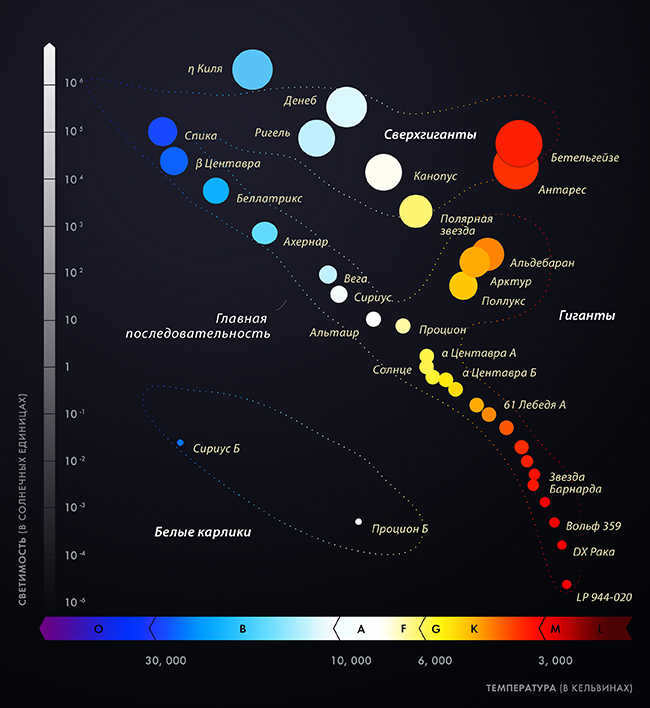
There is no definitive answer from astrophysicists to the simple question: “How large and massive can a star be?”
Related Materials
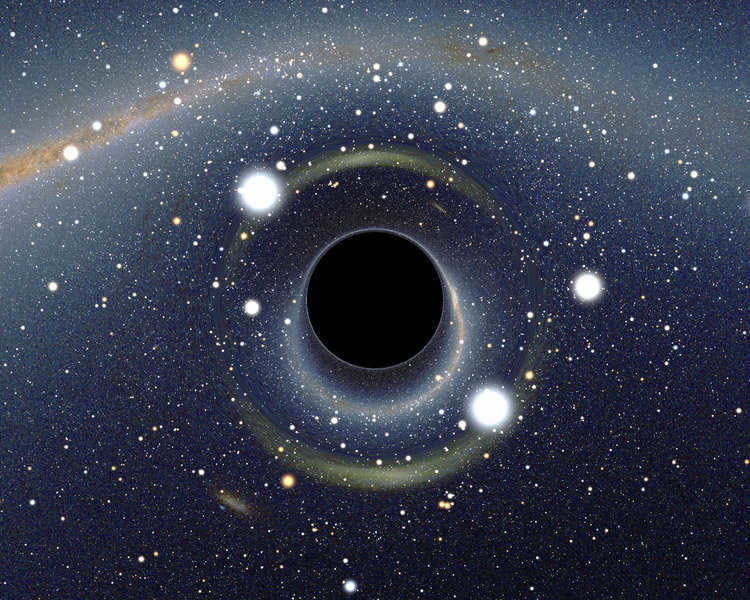
Naturally, there are inherent limitations preventing the existence of a star the size of a galaxy. Stars with masses ranging from 8 to approximately 150 times that of the Sun have short lifespans due to the immense temperatures within their cores, causing rapid thermonuclear reactions. Previously, it was believed that the maximum mass for a star was 150 times that of the Sun. However, recent space studies have indicated that even a mass of 300 times that of the Sun may not be the ultimate limit for a star! In these stars, in addition to the incredibly fast fusion reactions, there are additional fluctuations resulting from the interaction of particle-antiparticle pairs. These supergiants can potentially undergo annihilation before the conventional collapse, leading to explosive events. However, all of this remains theoretical.

